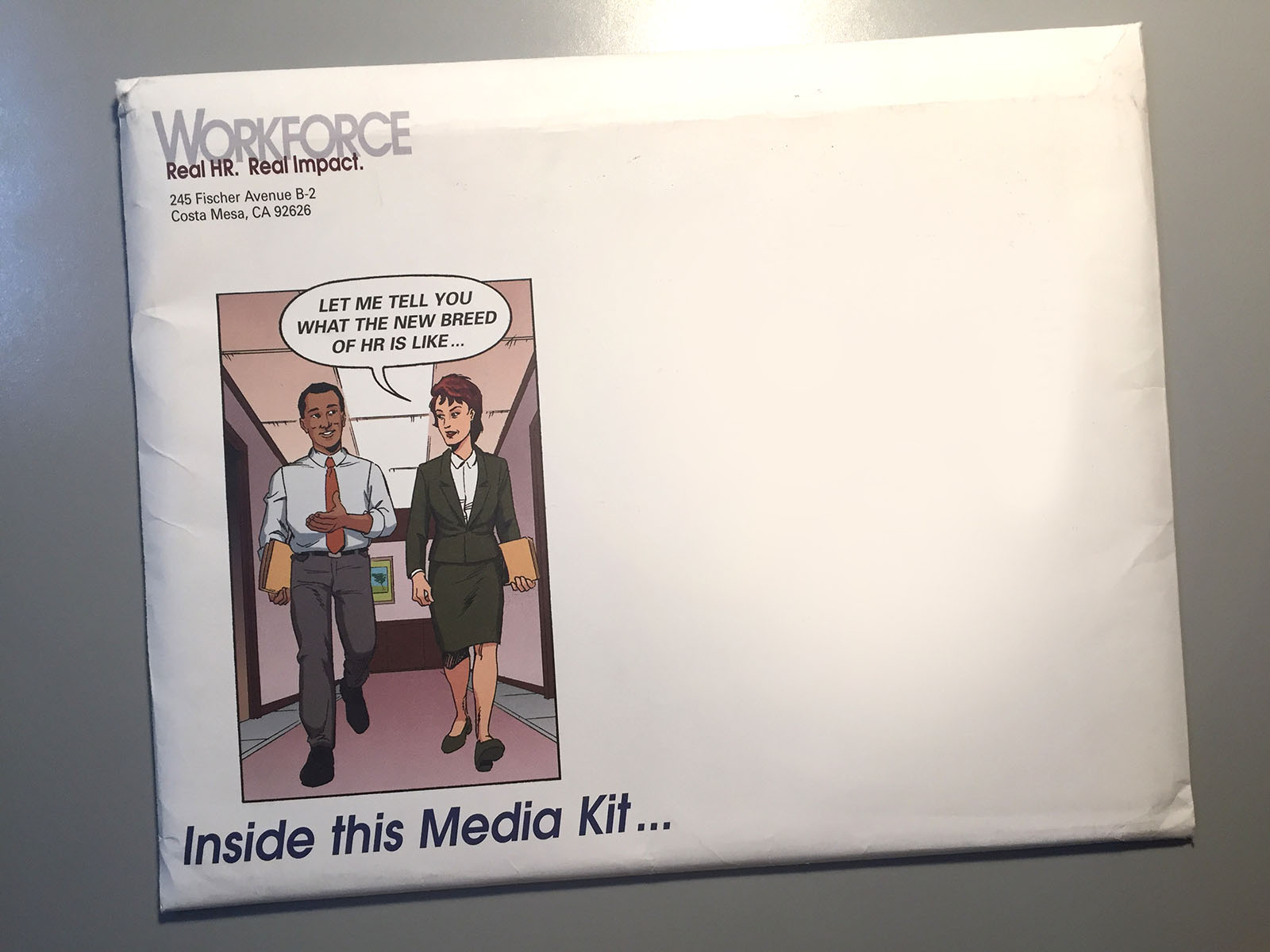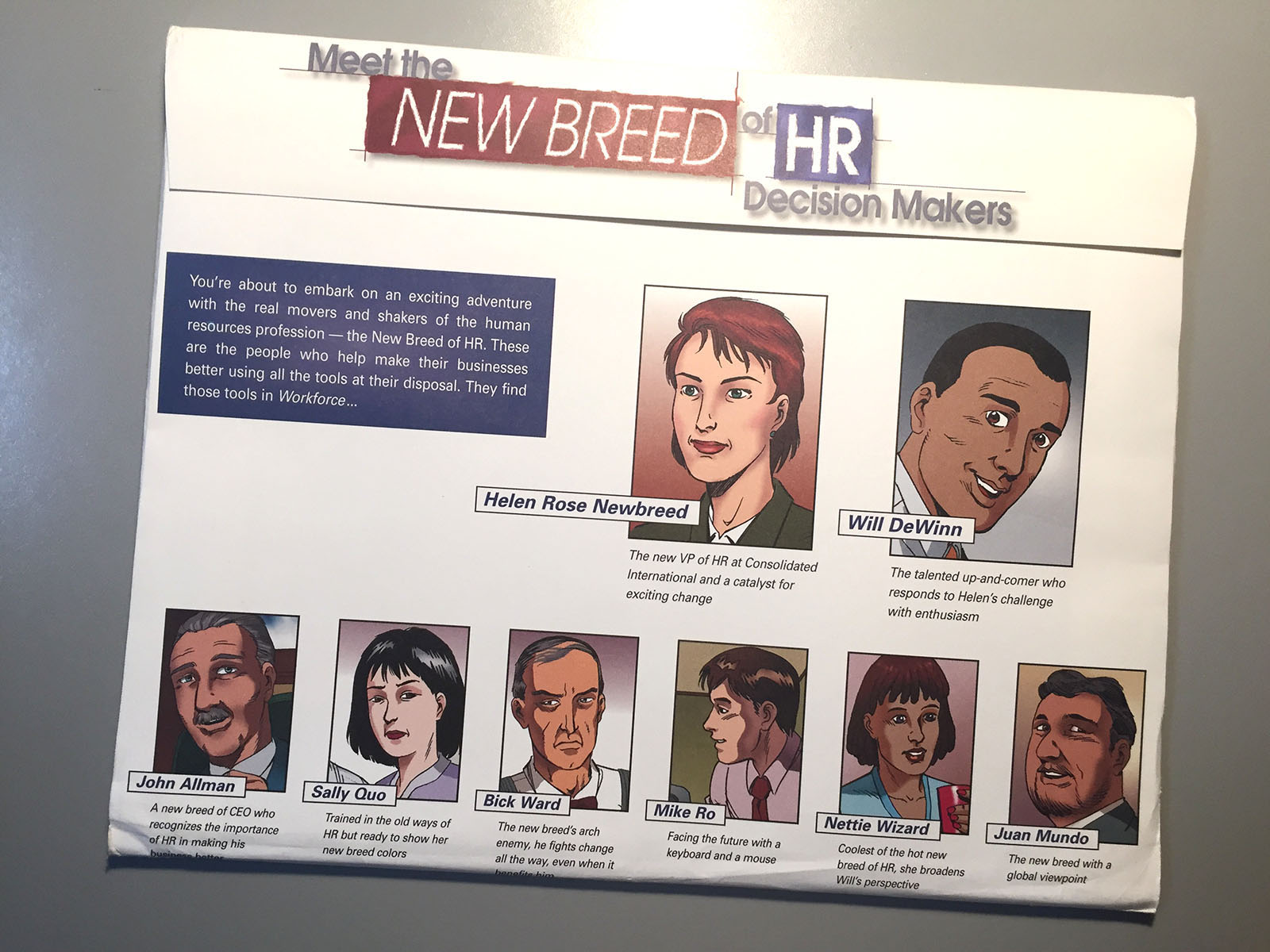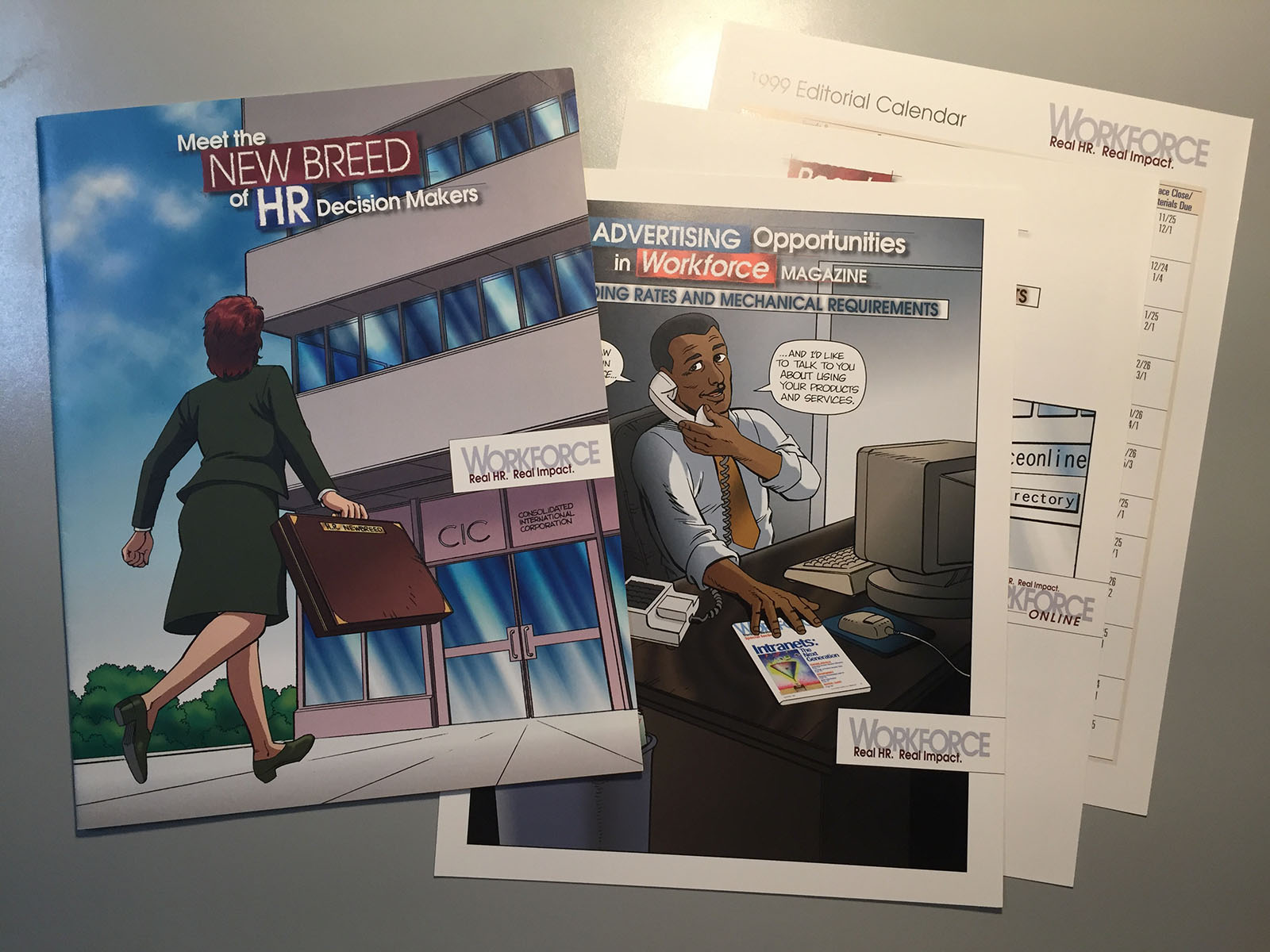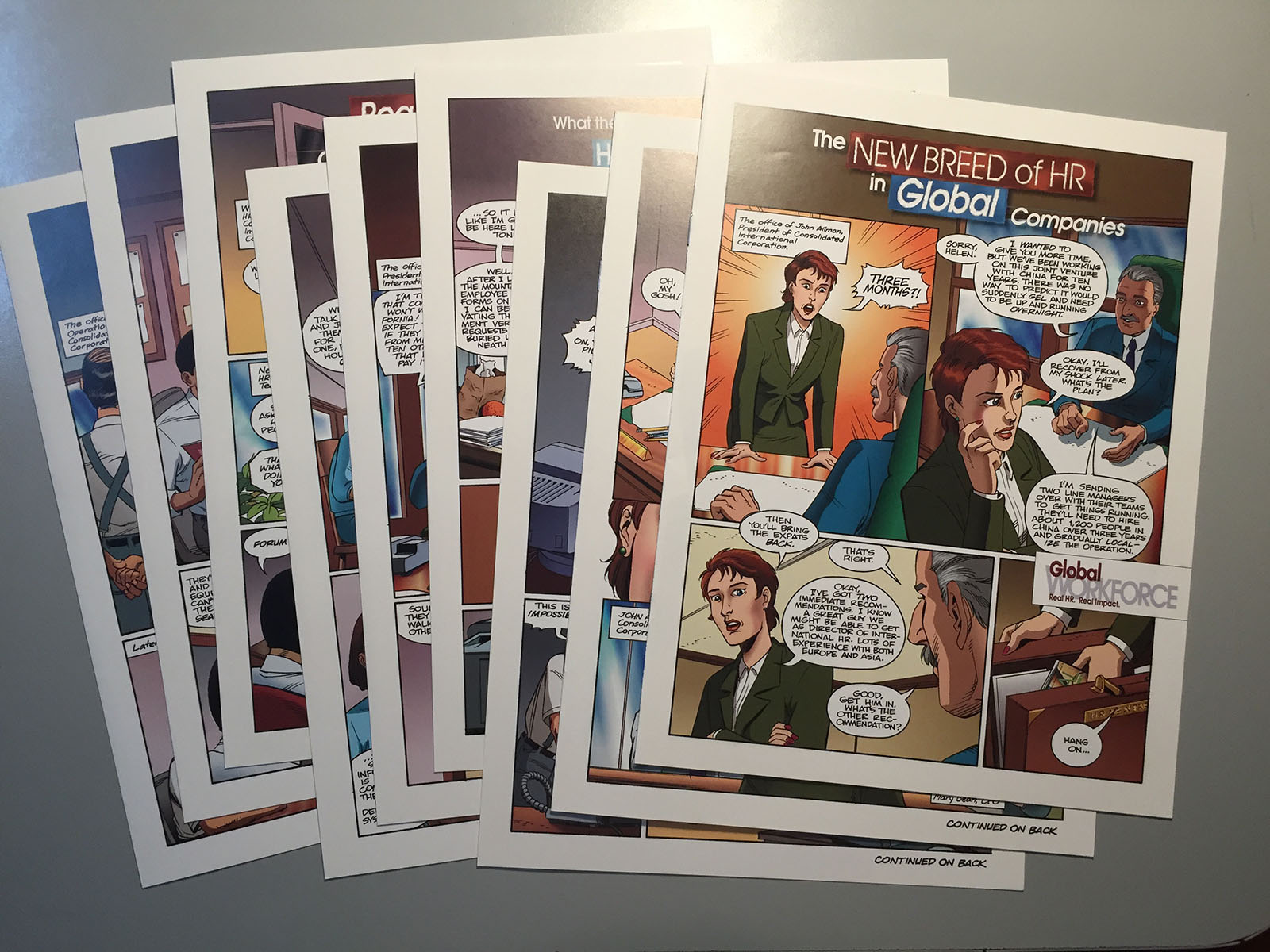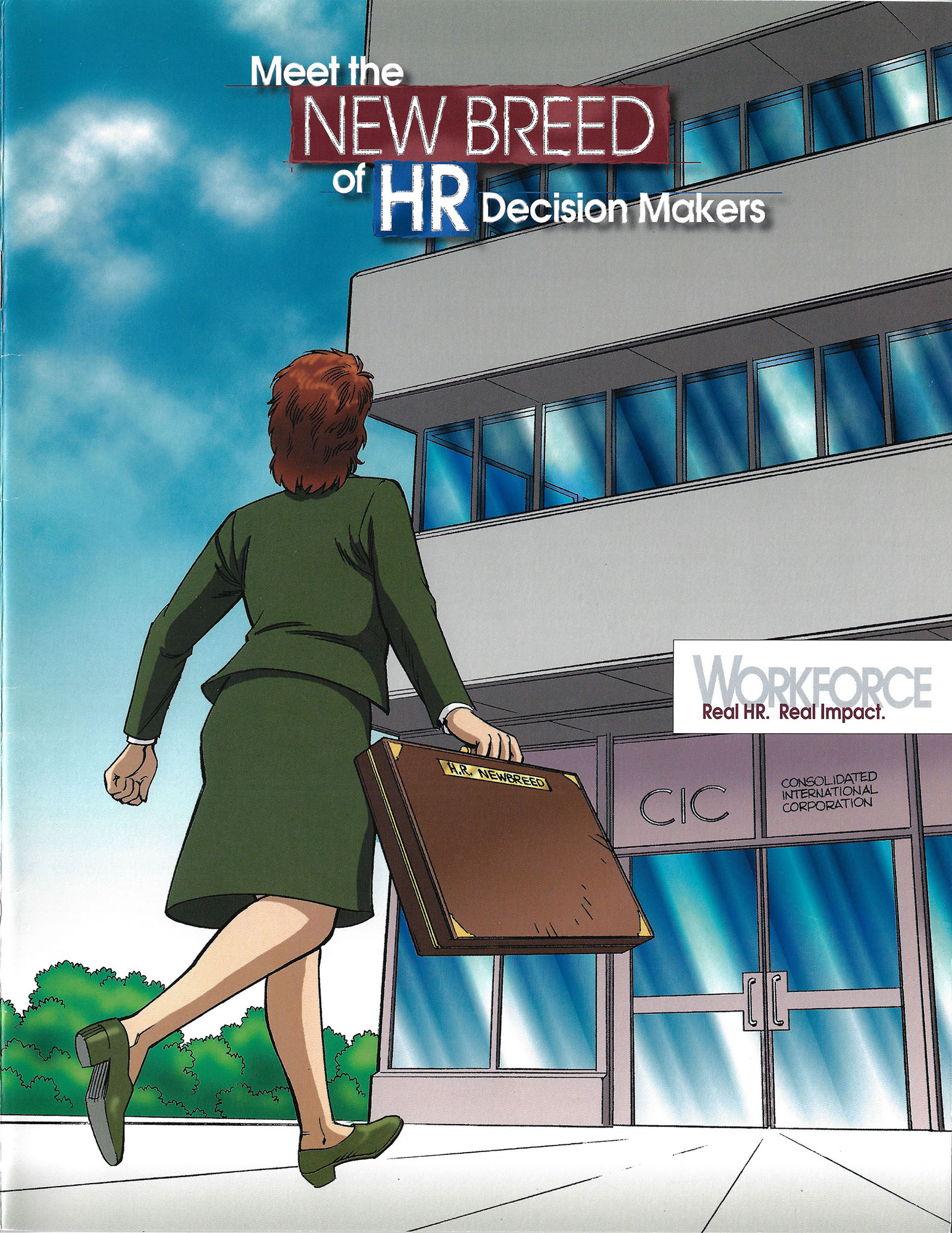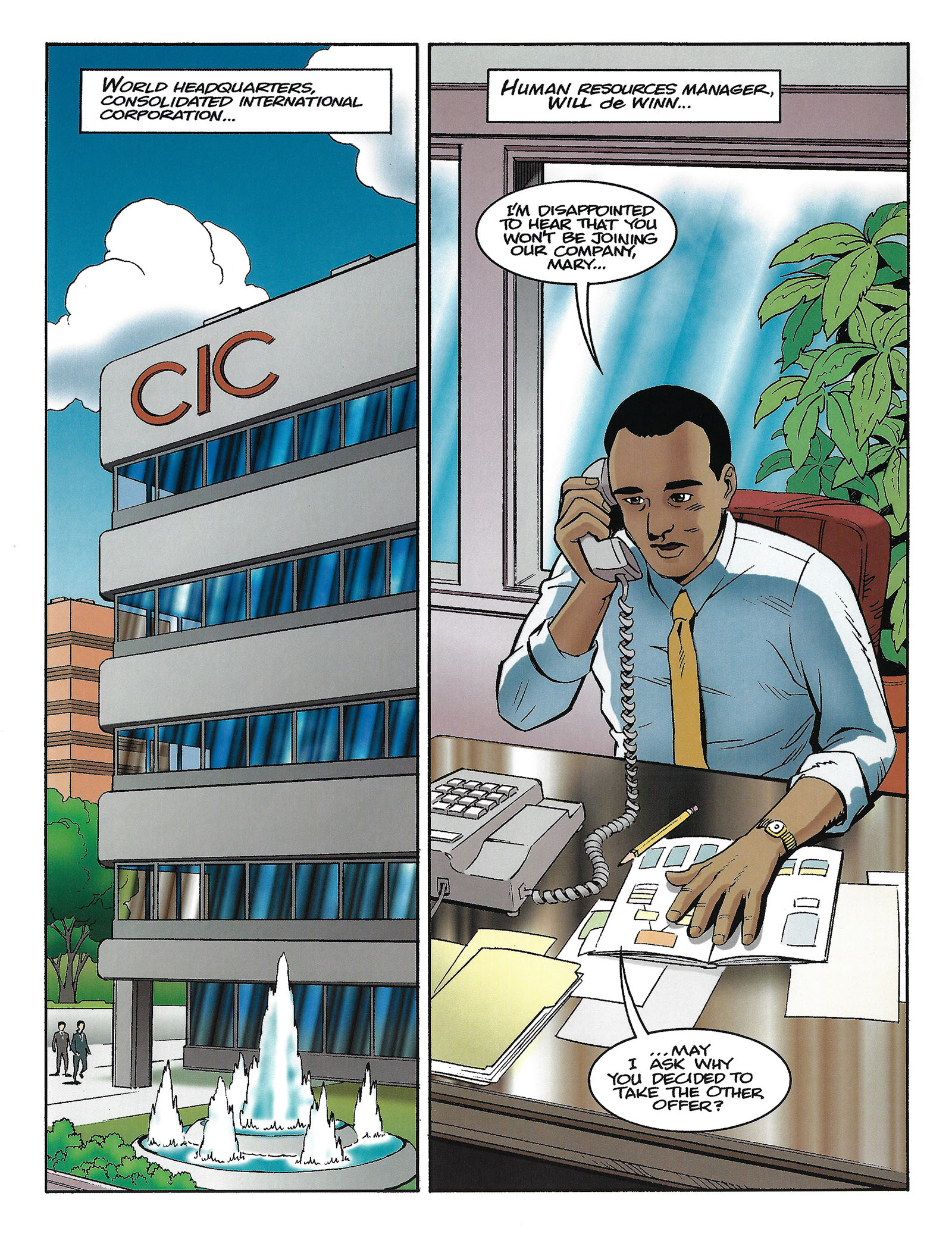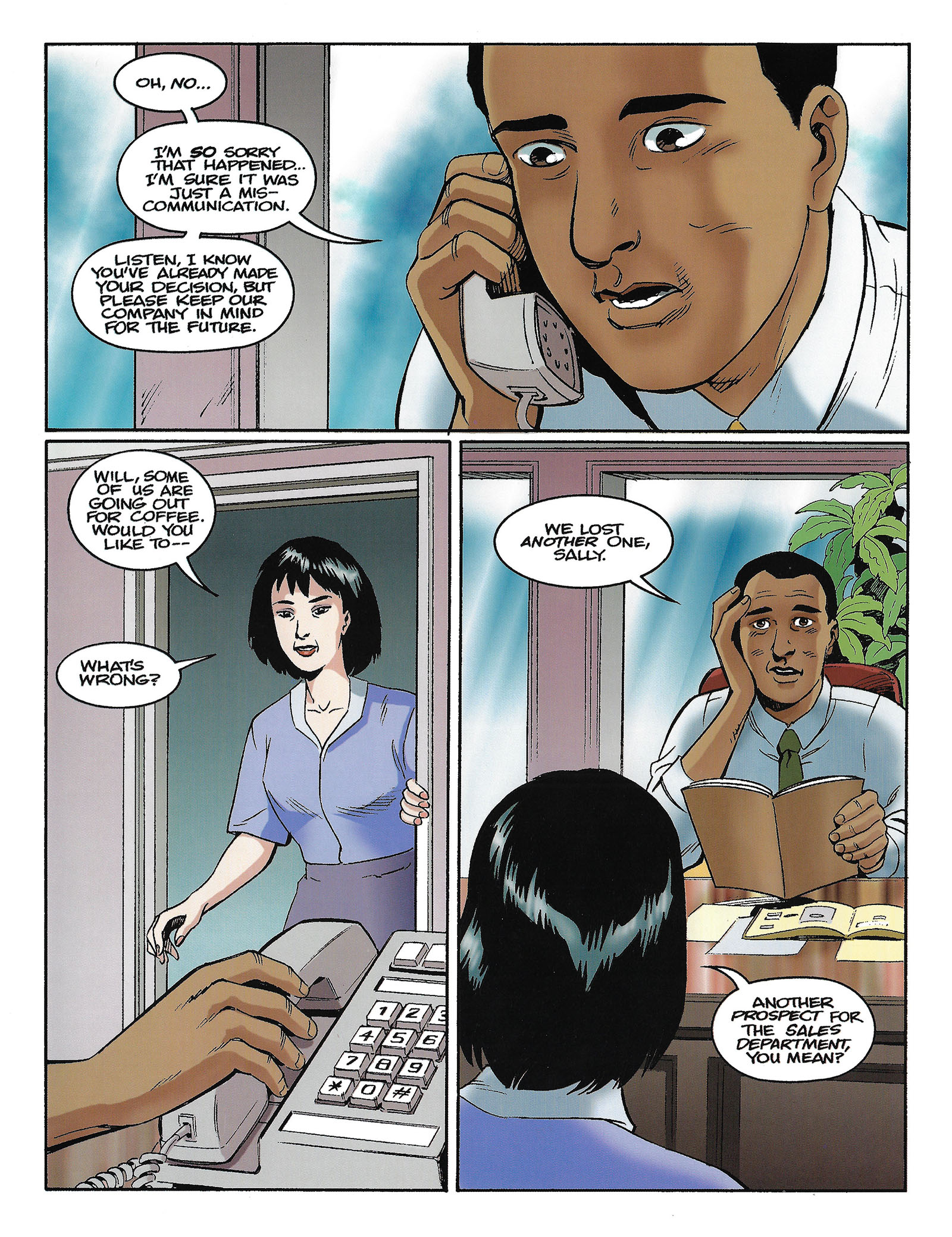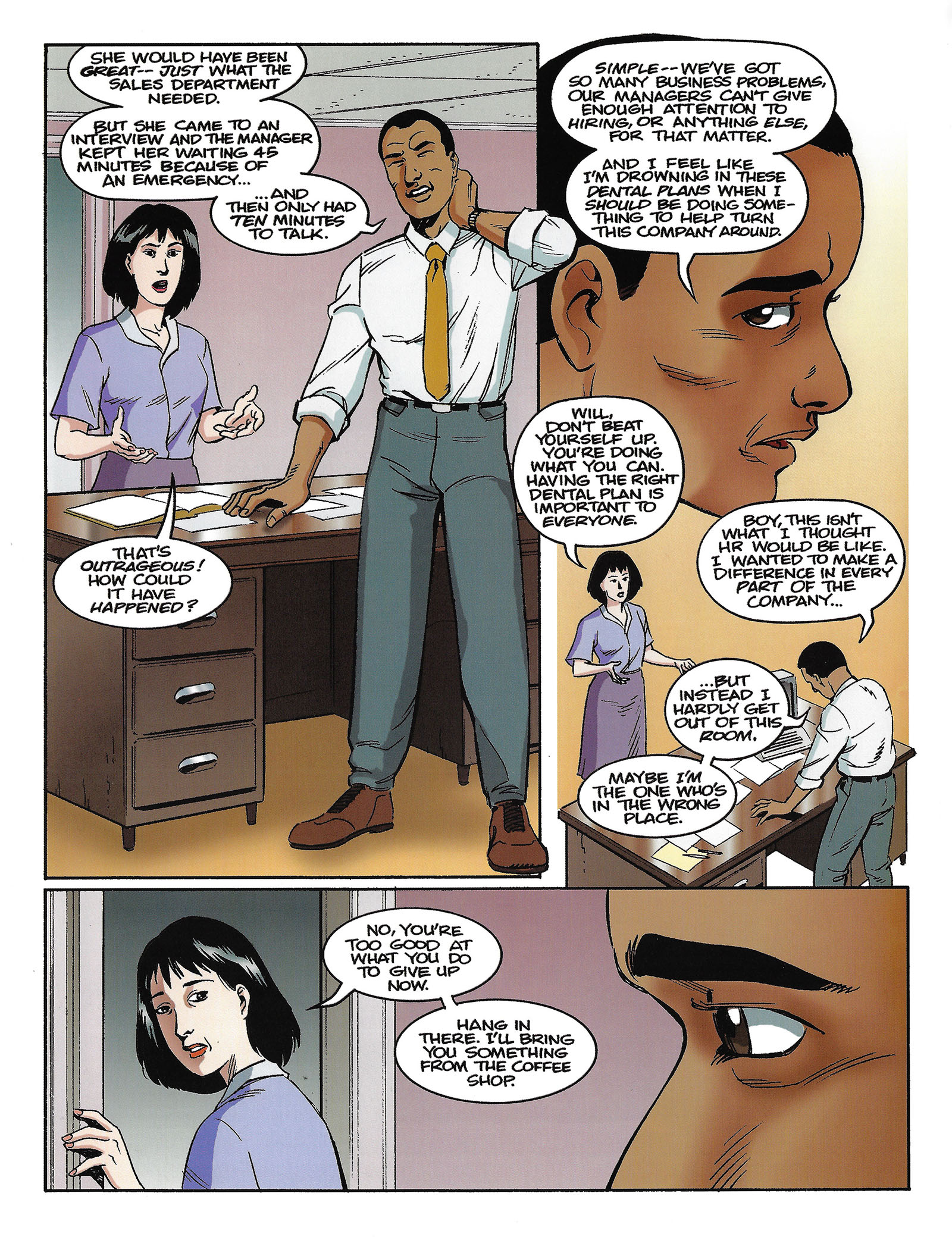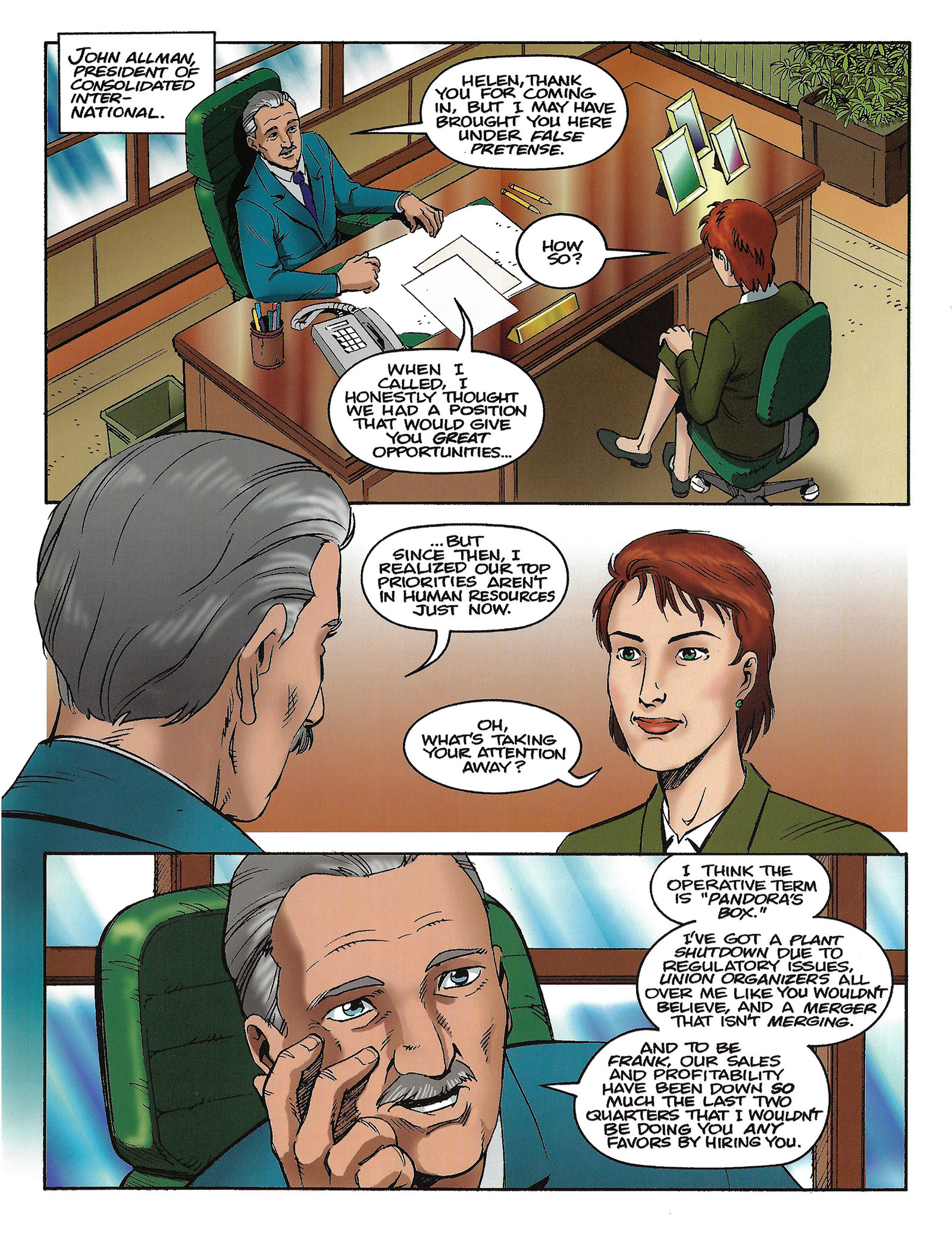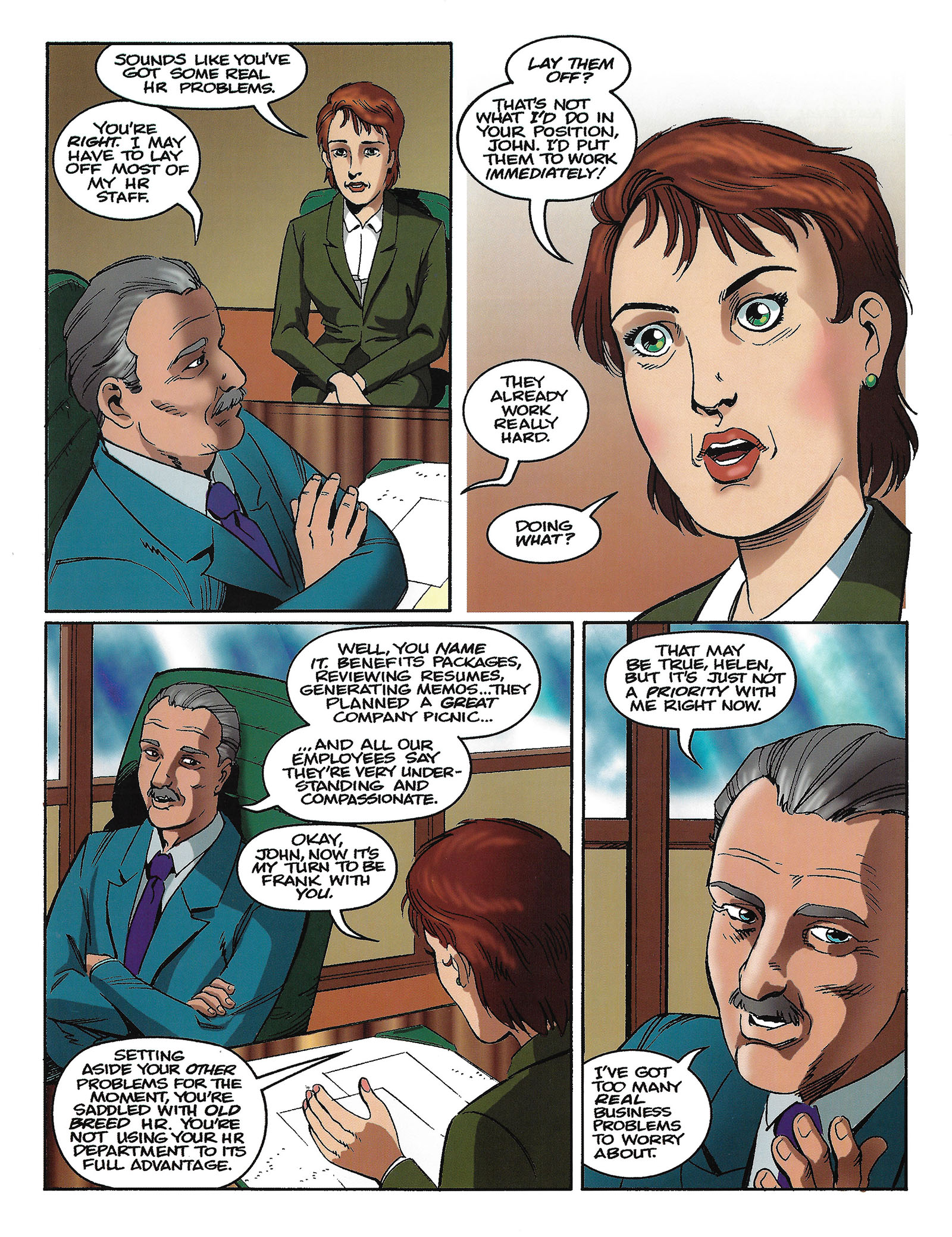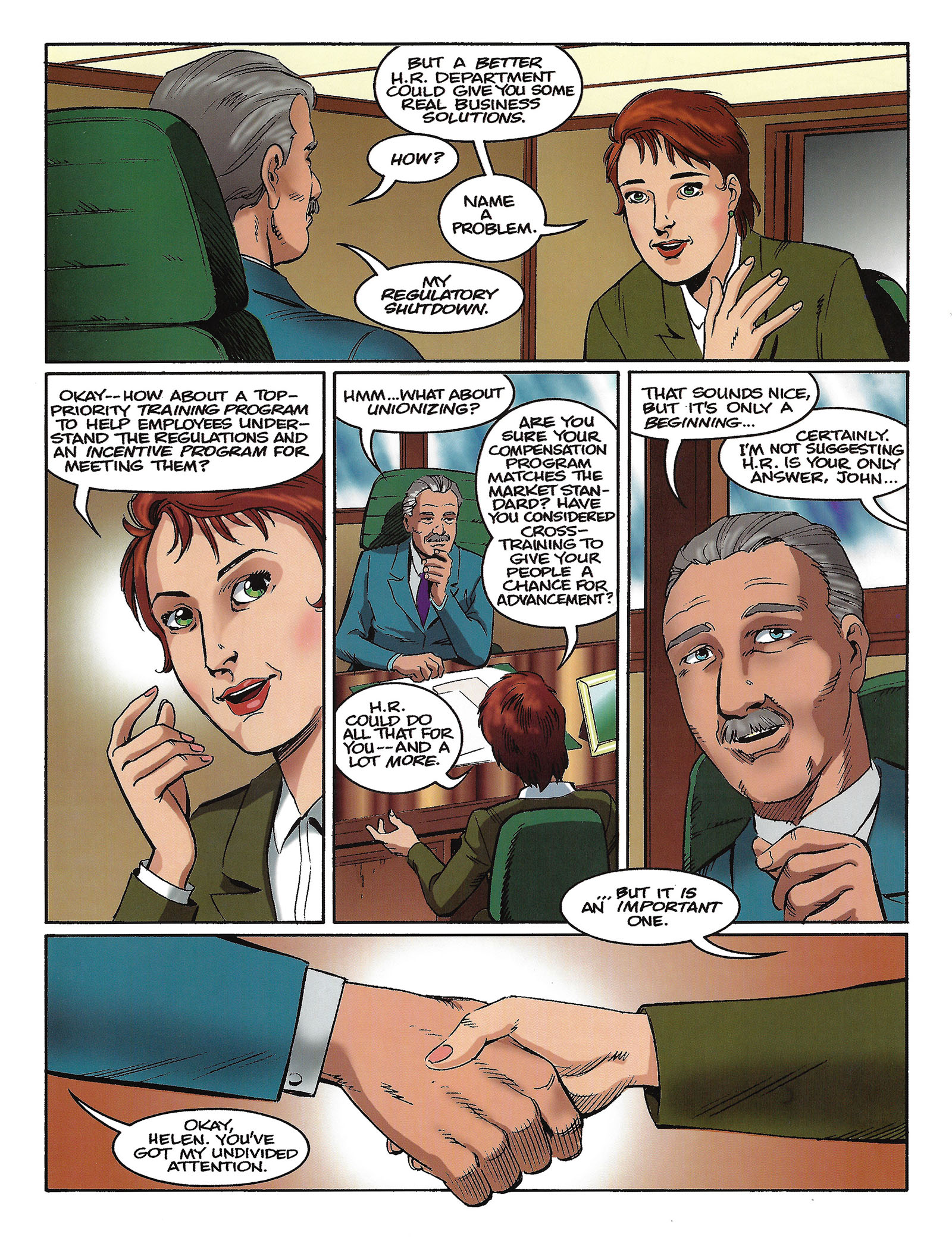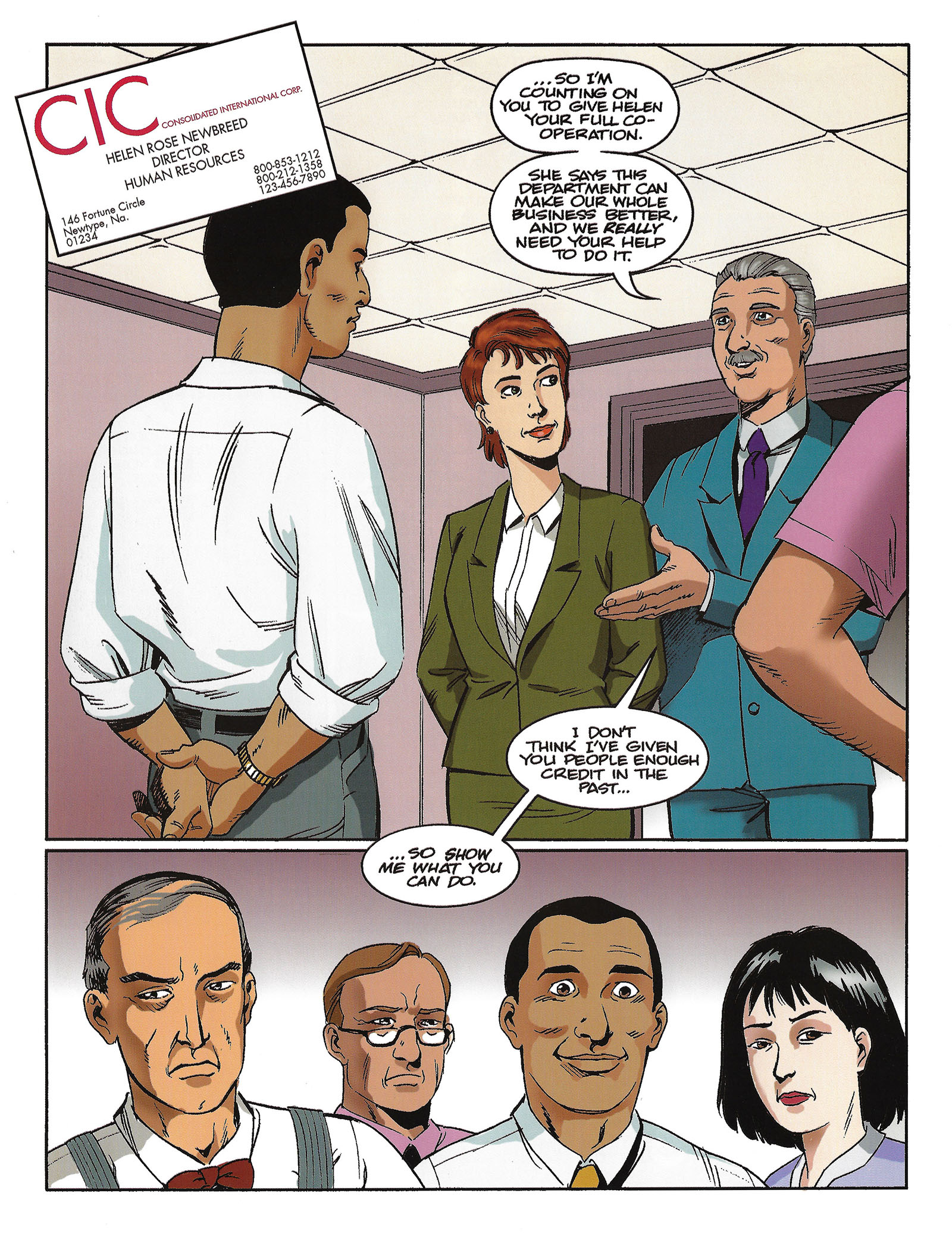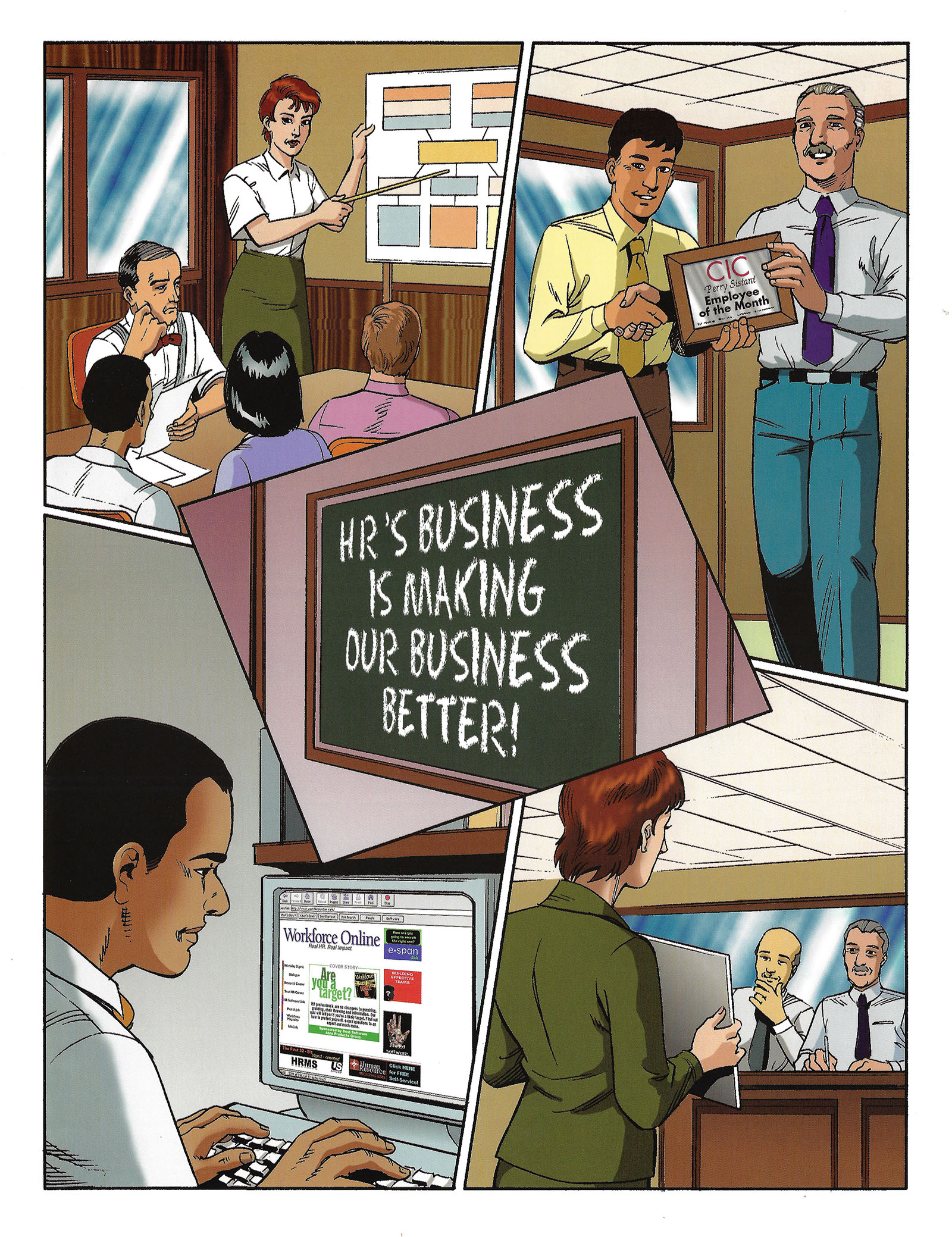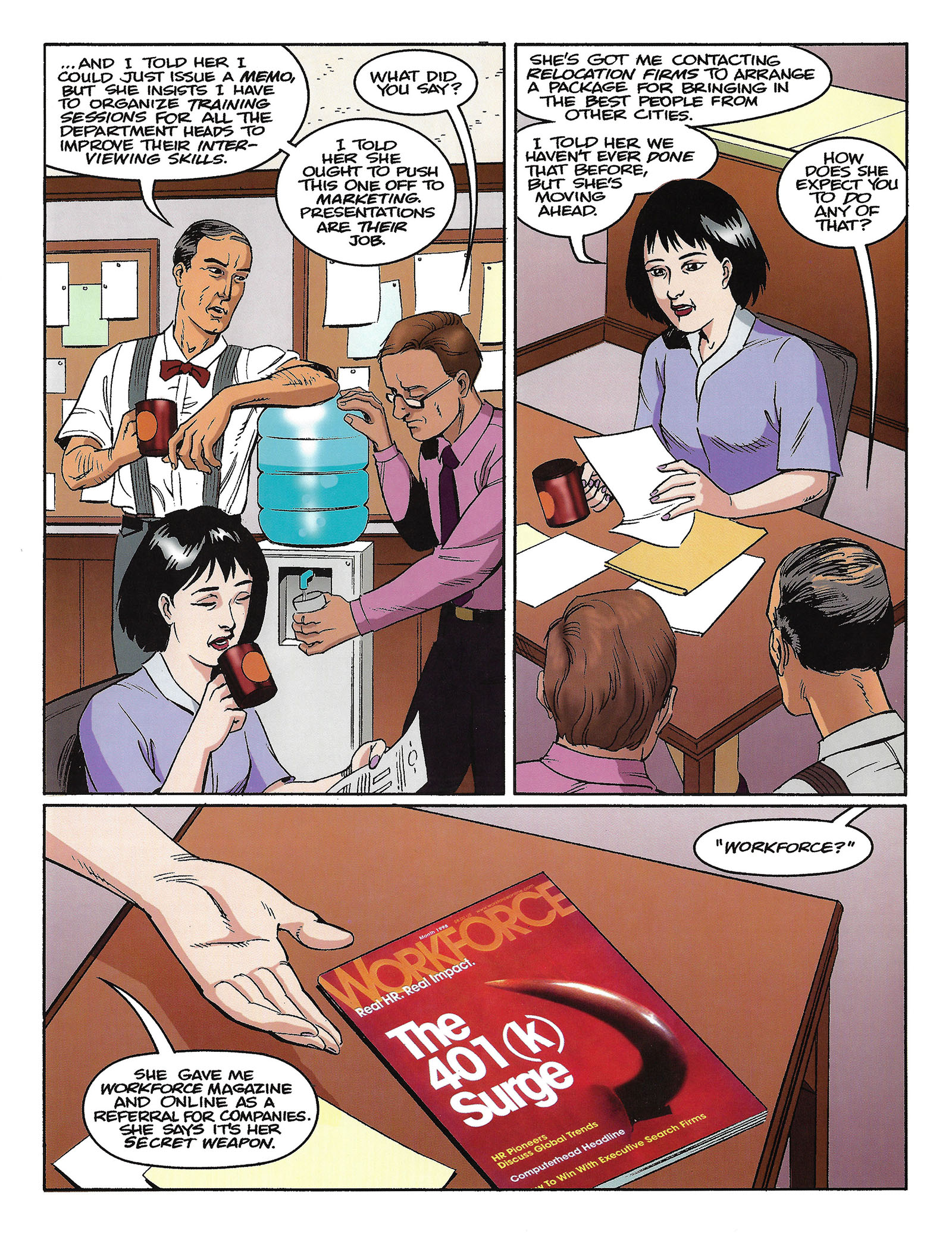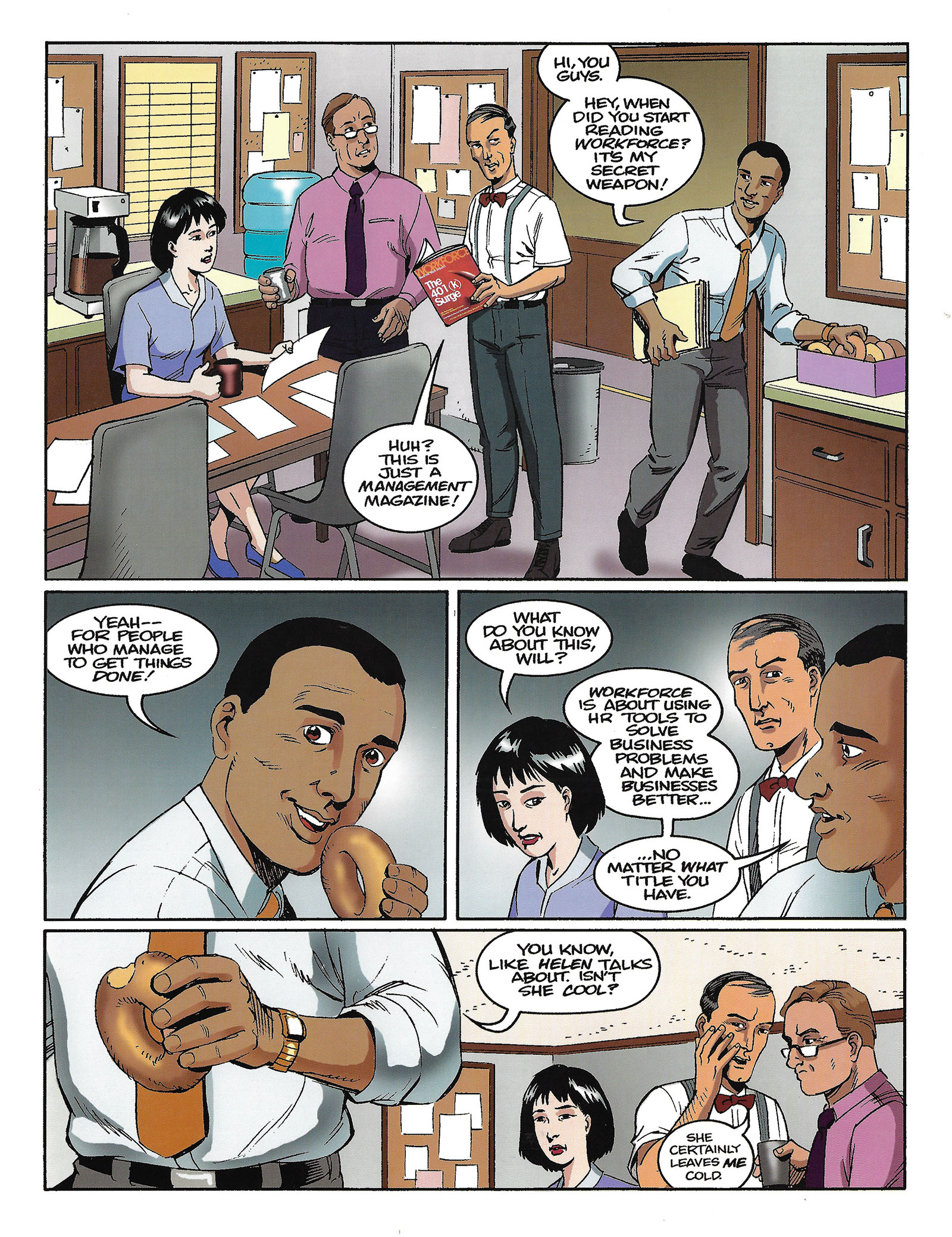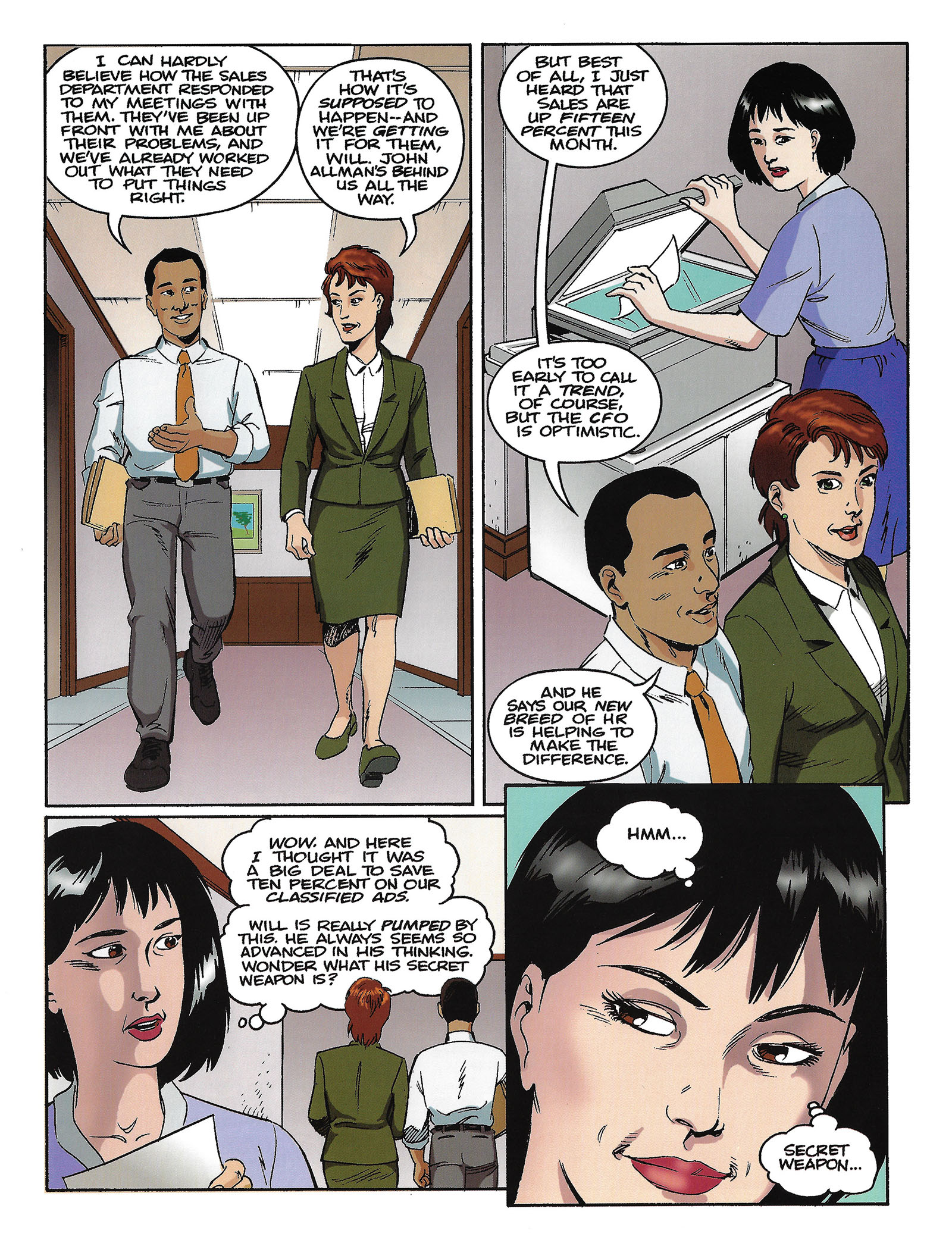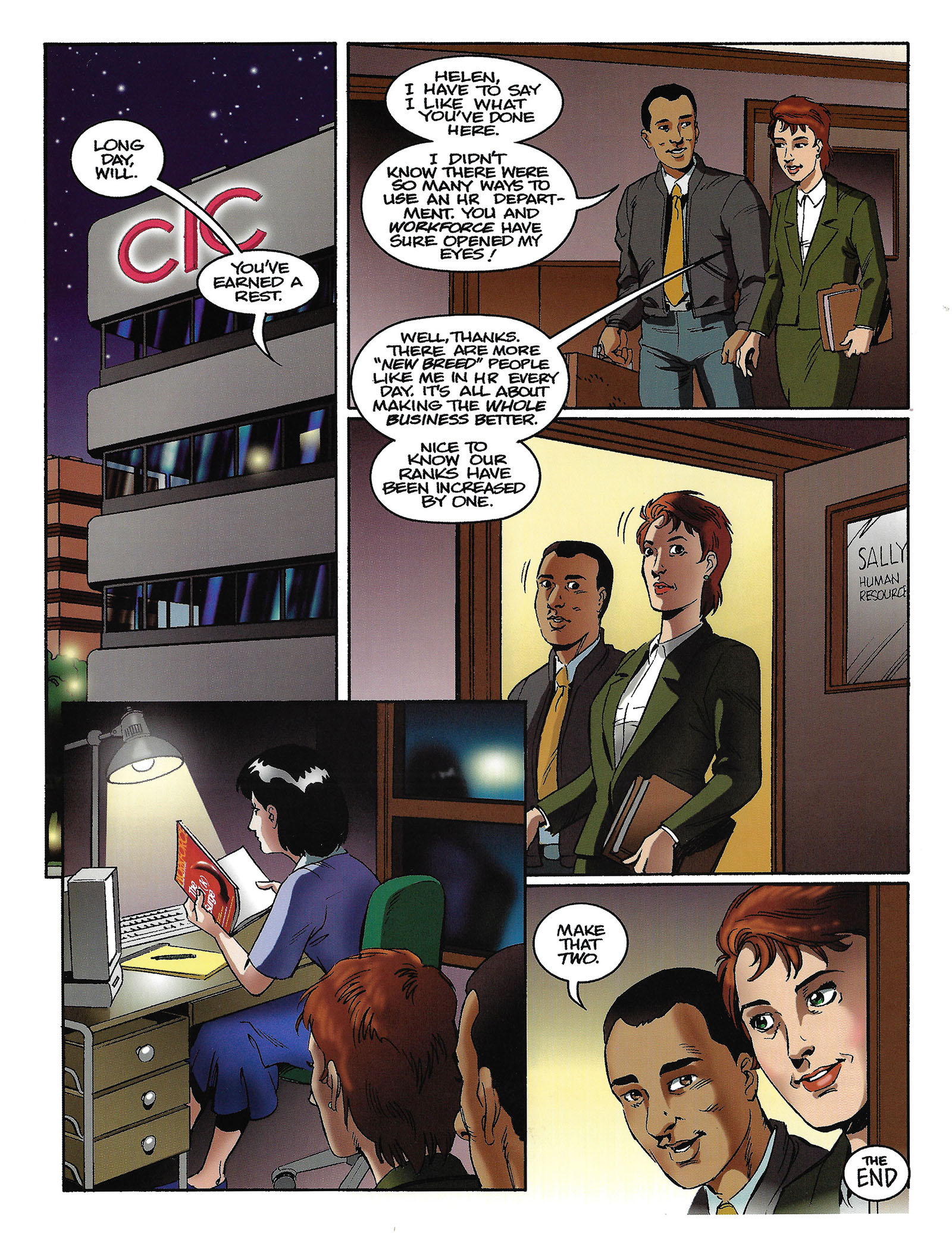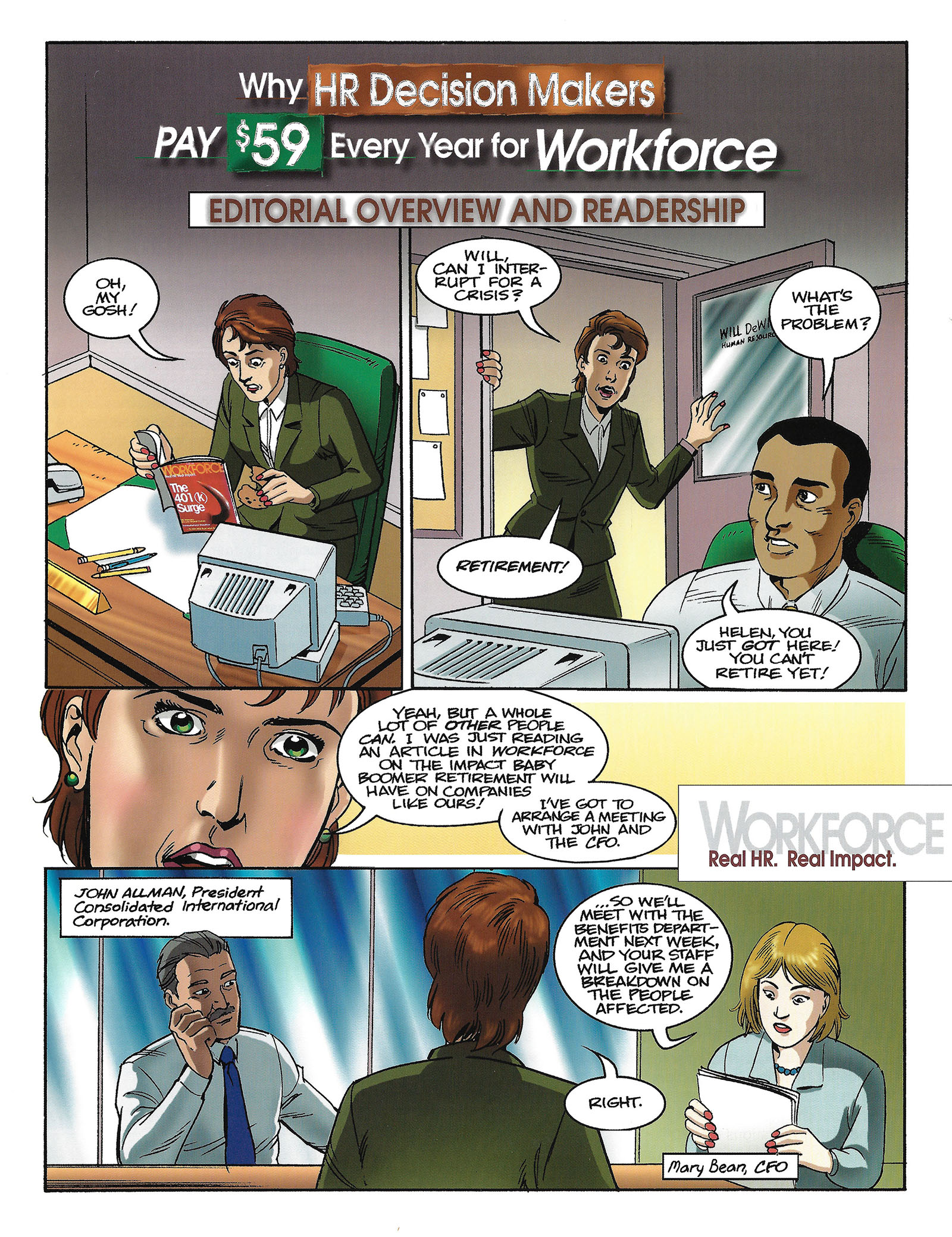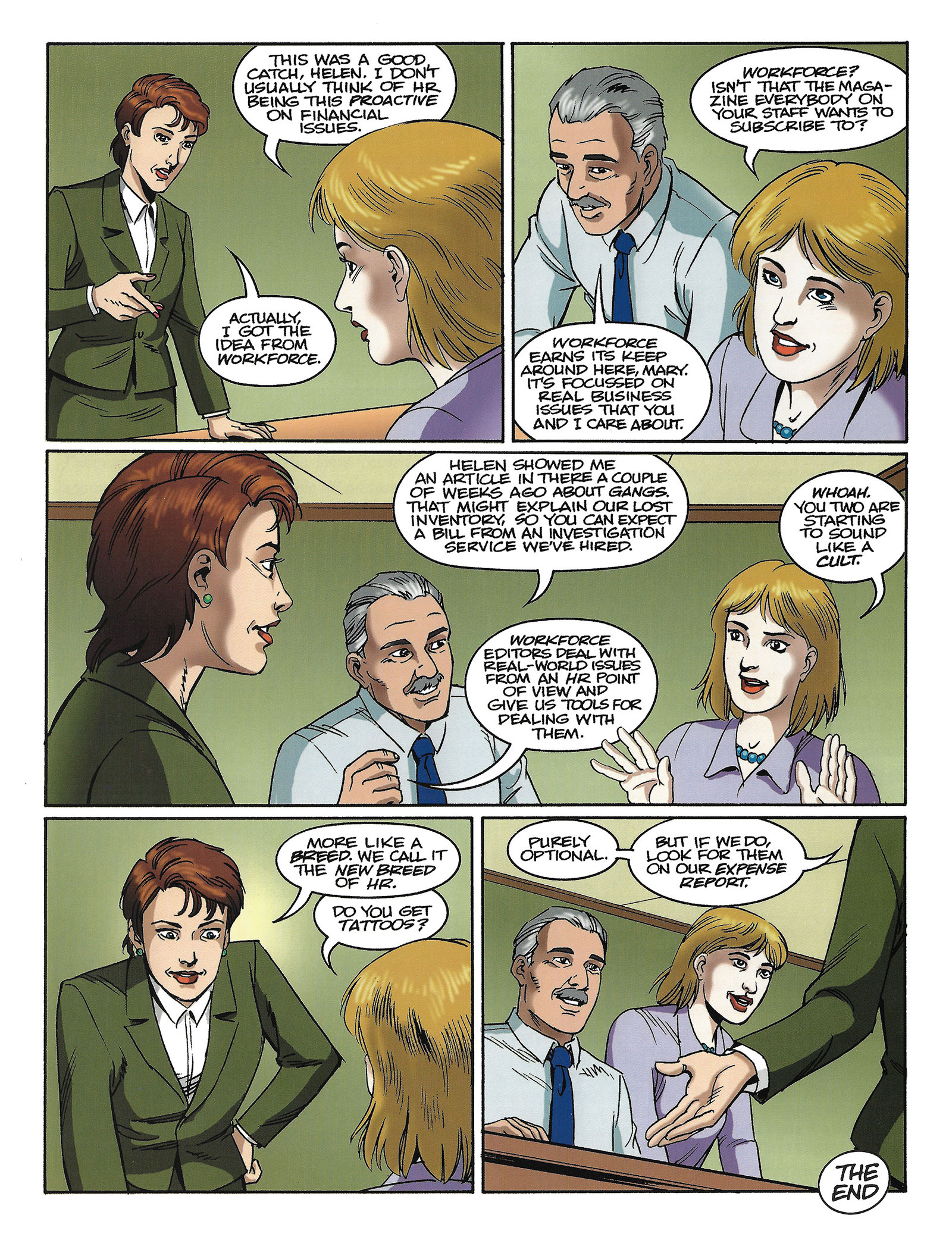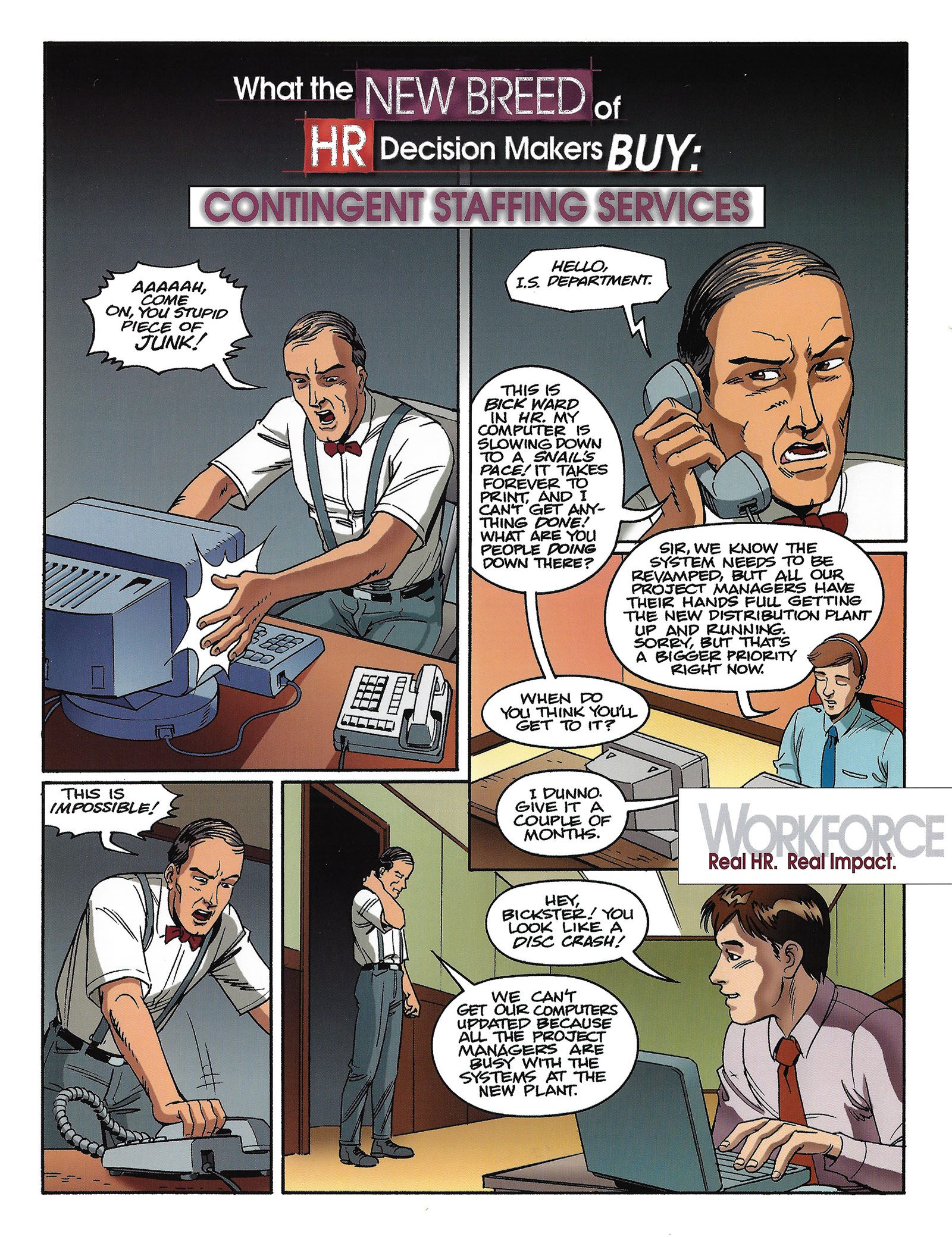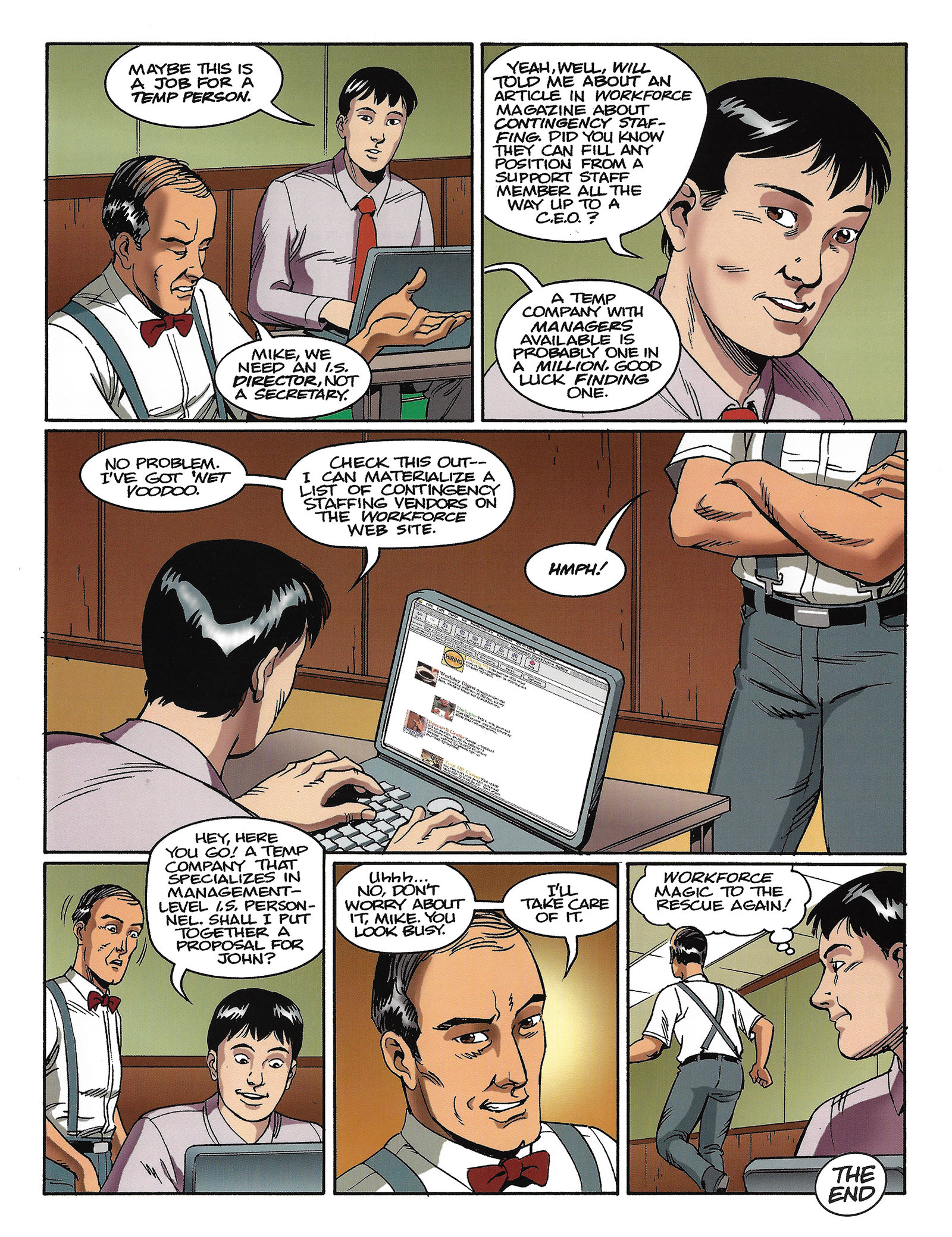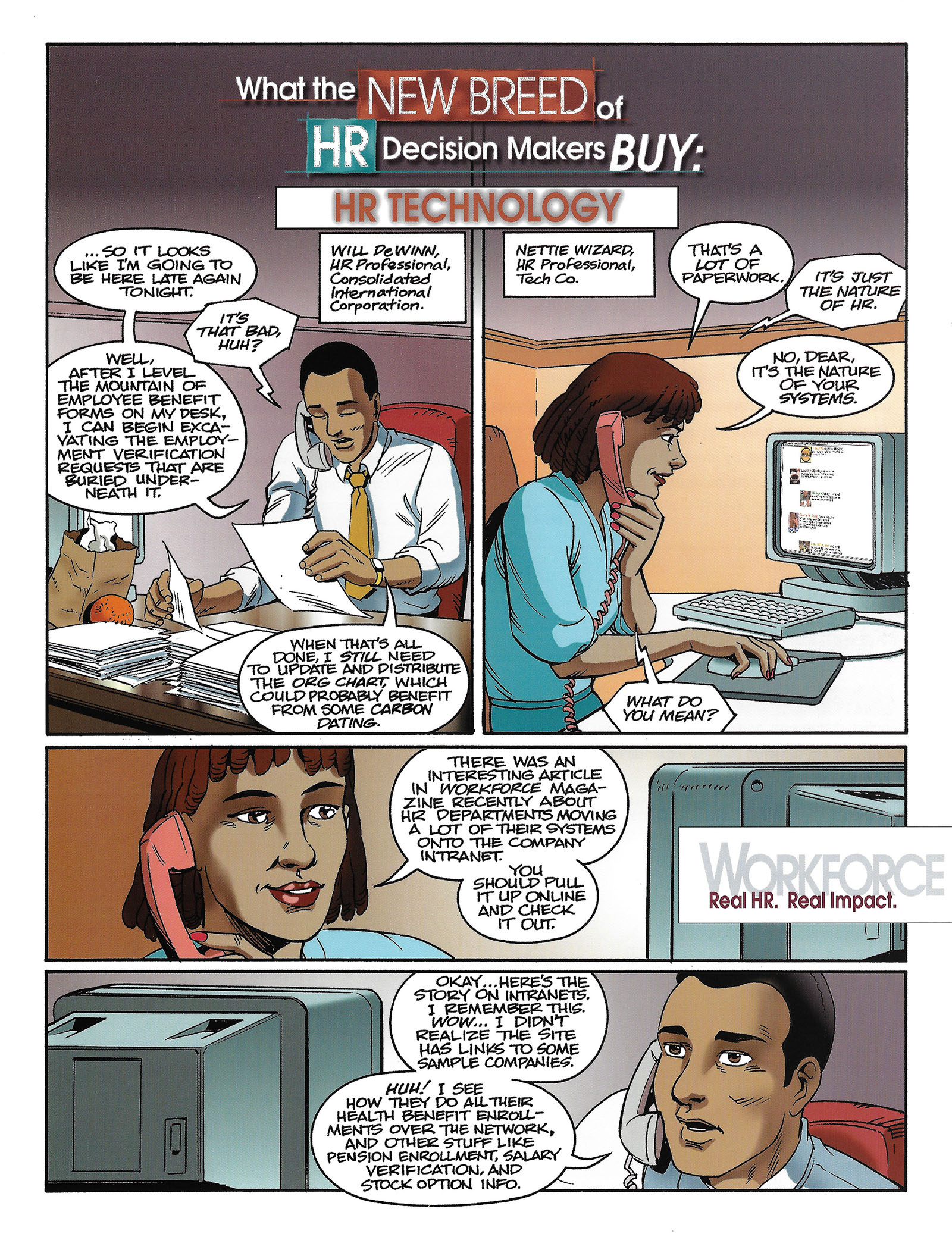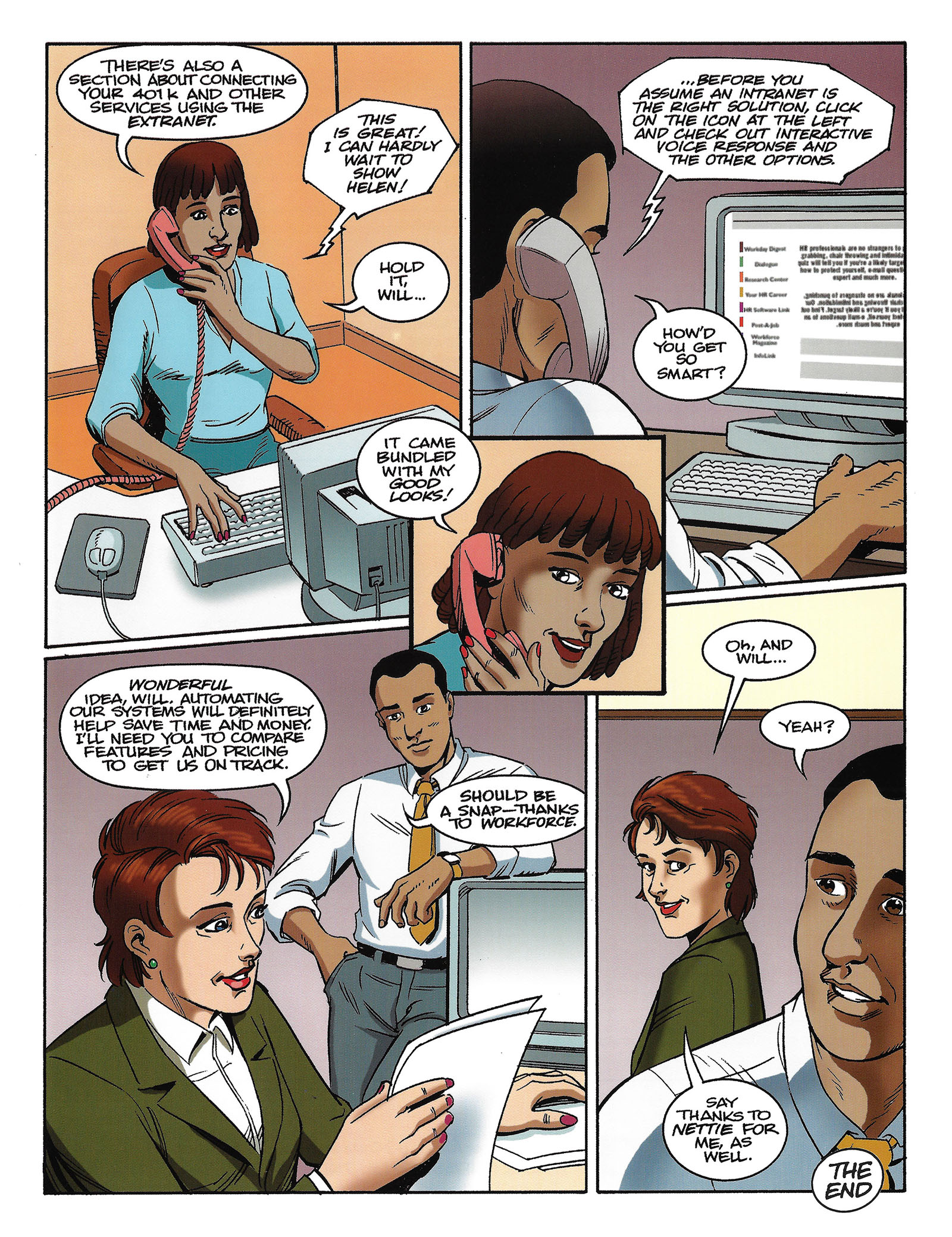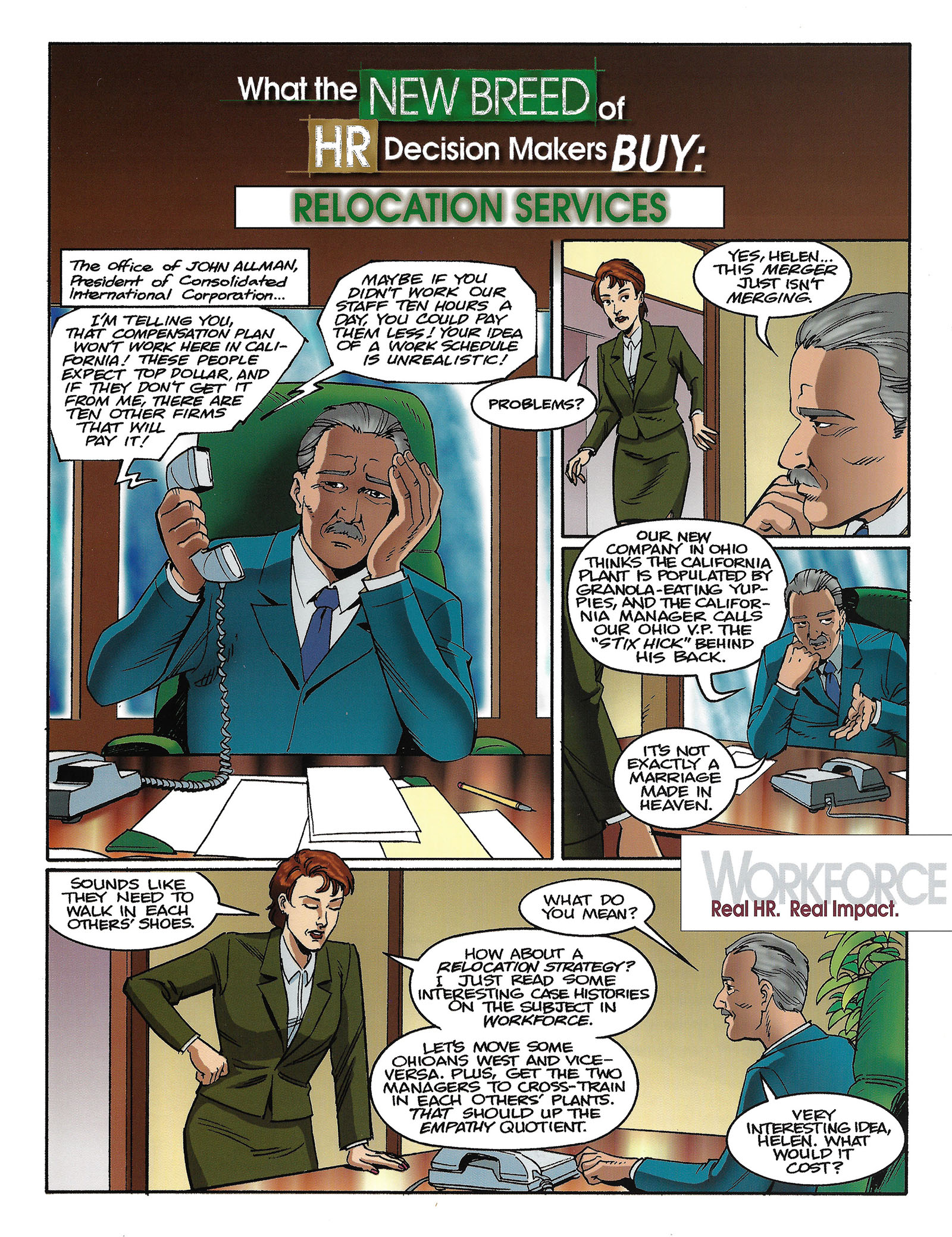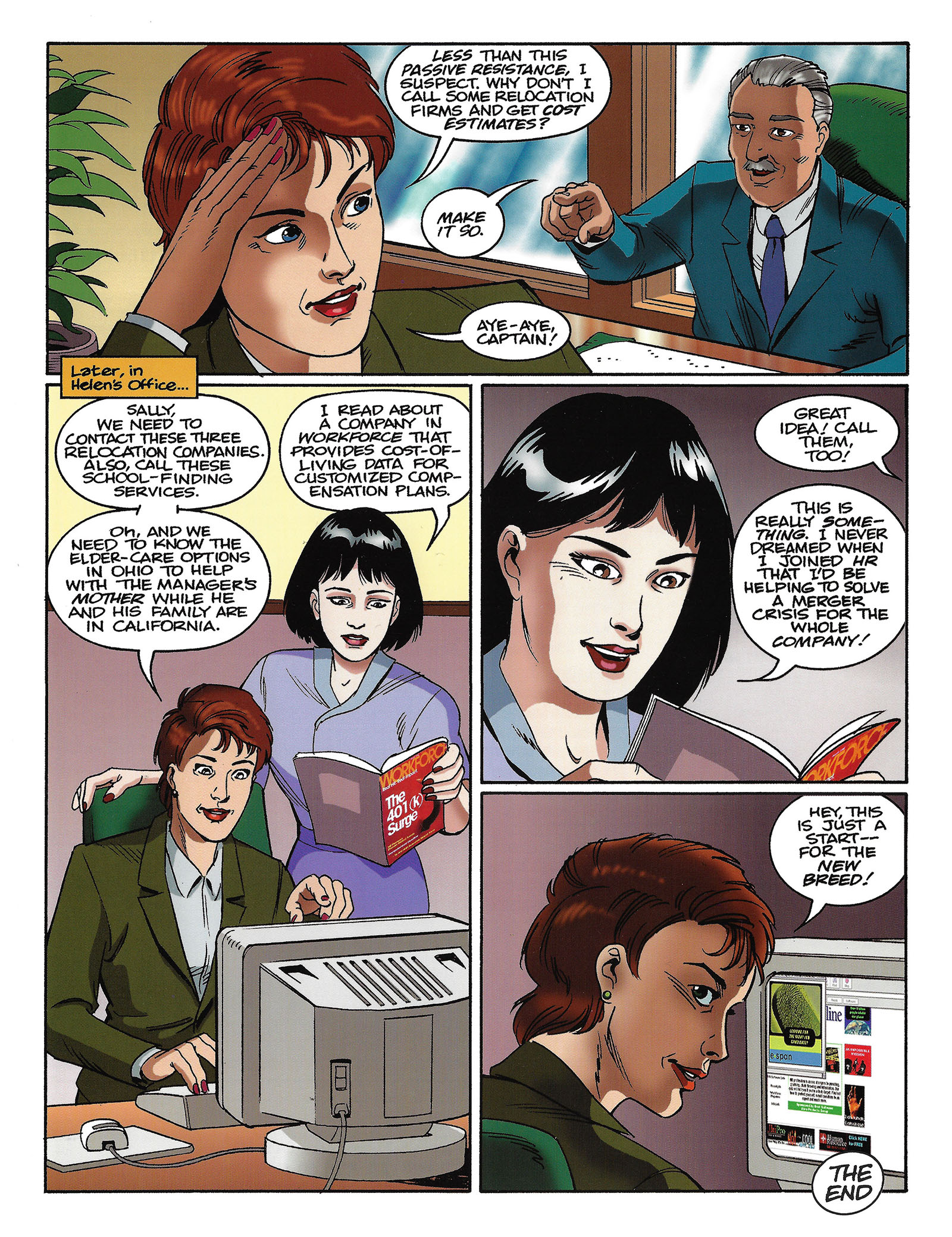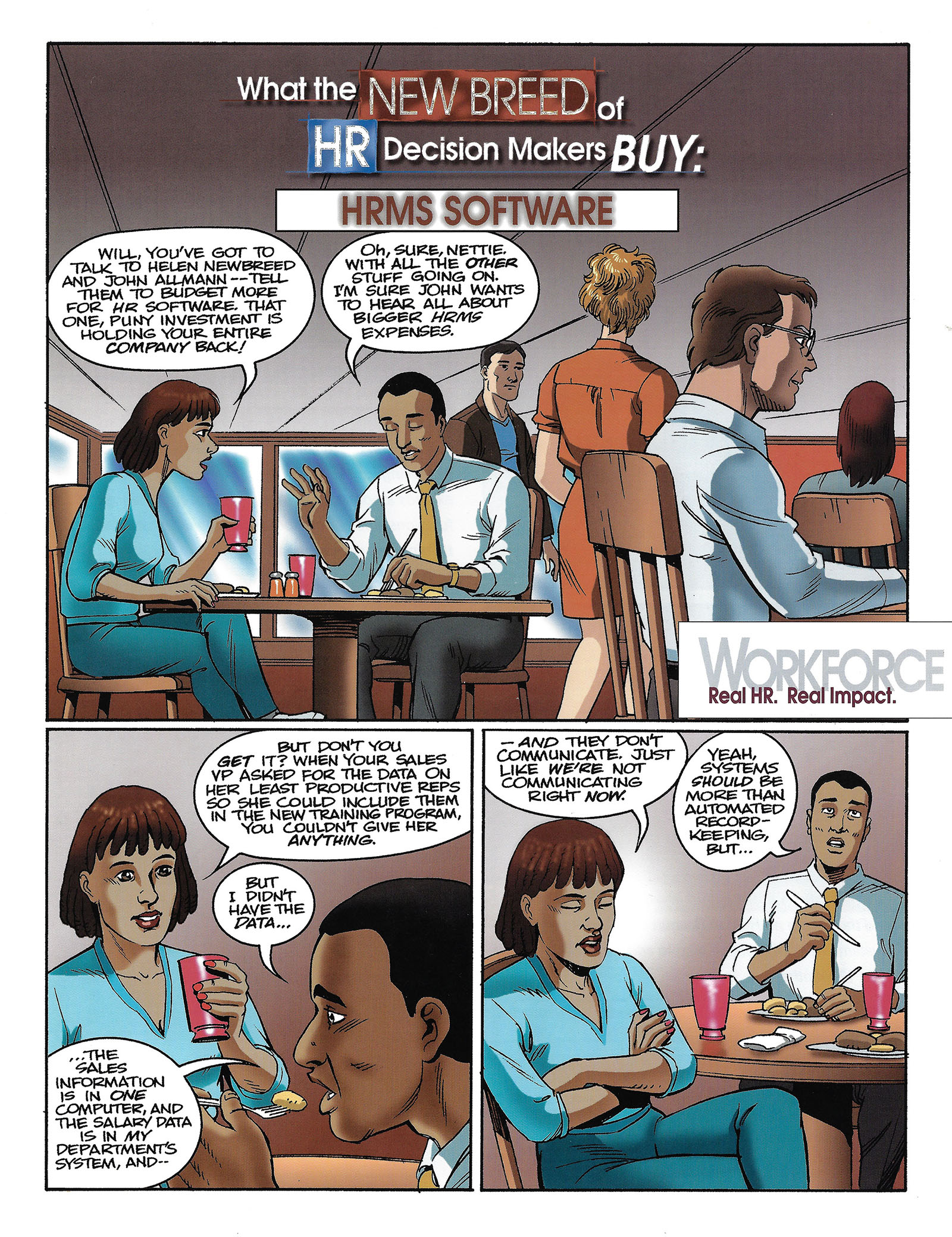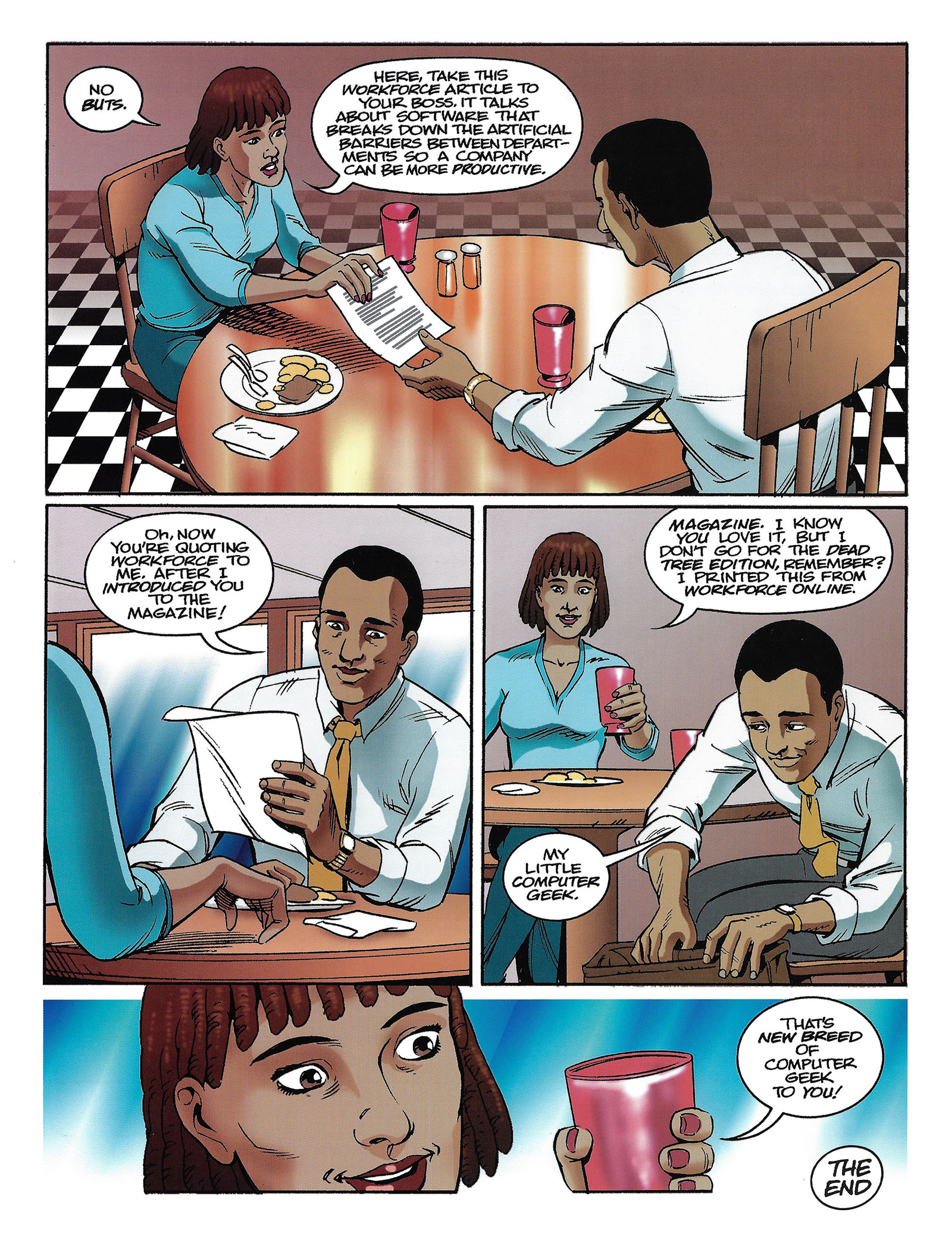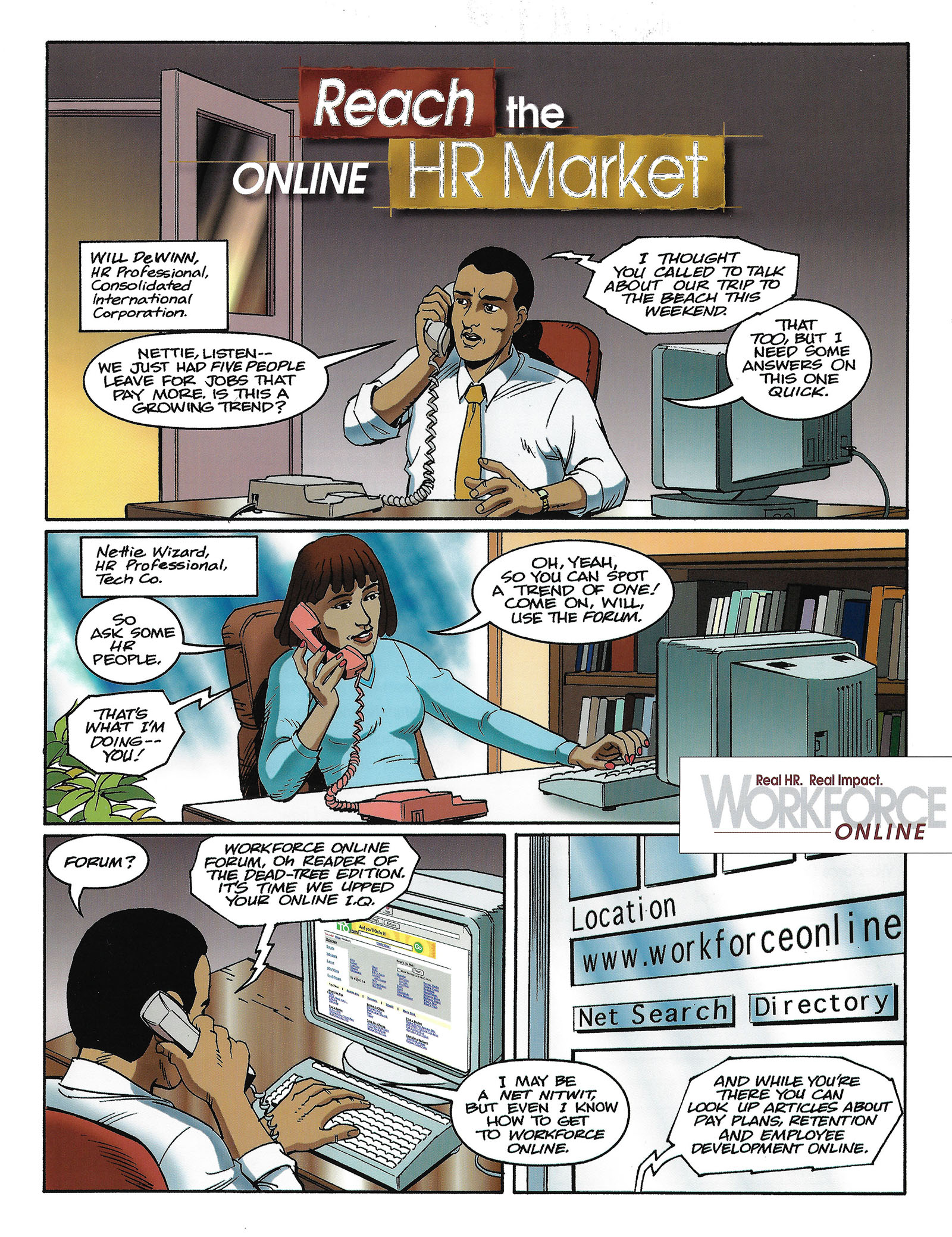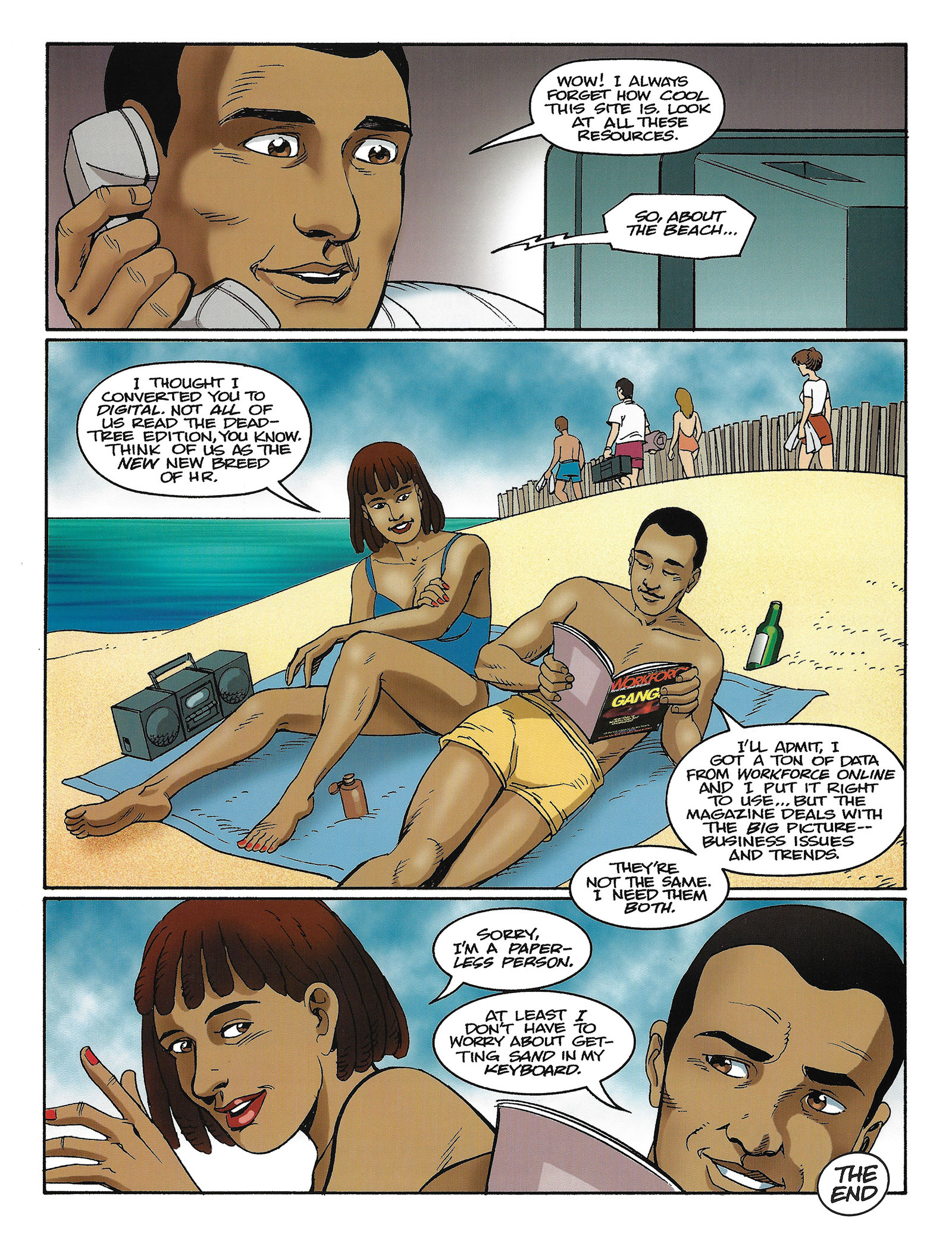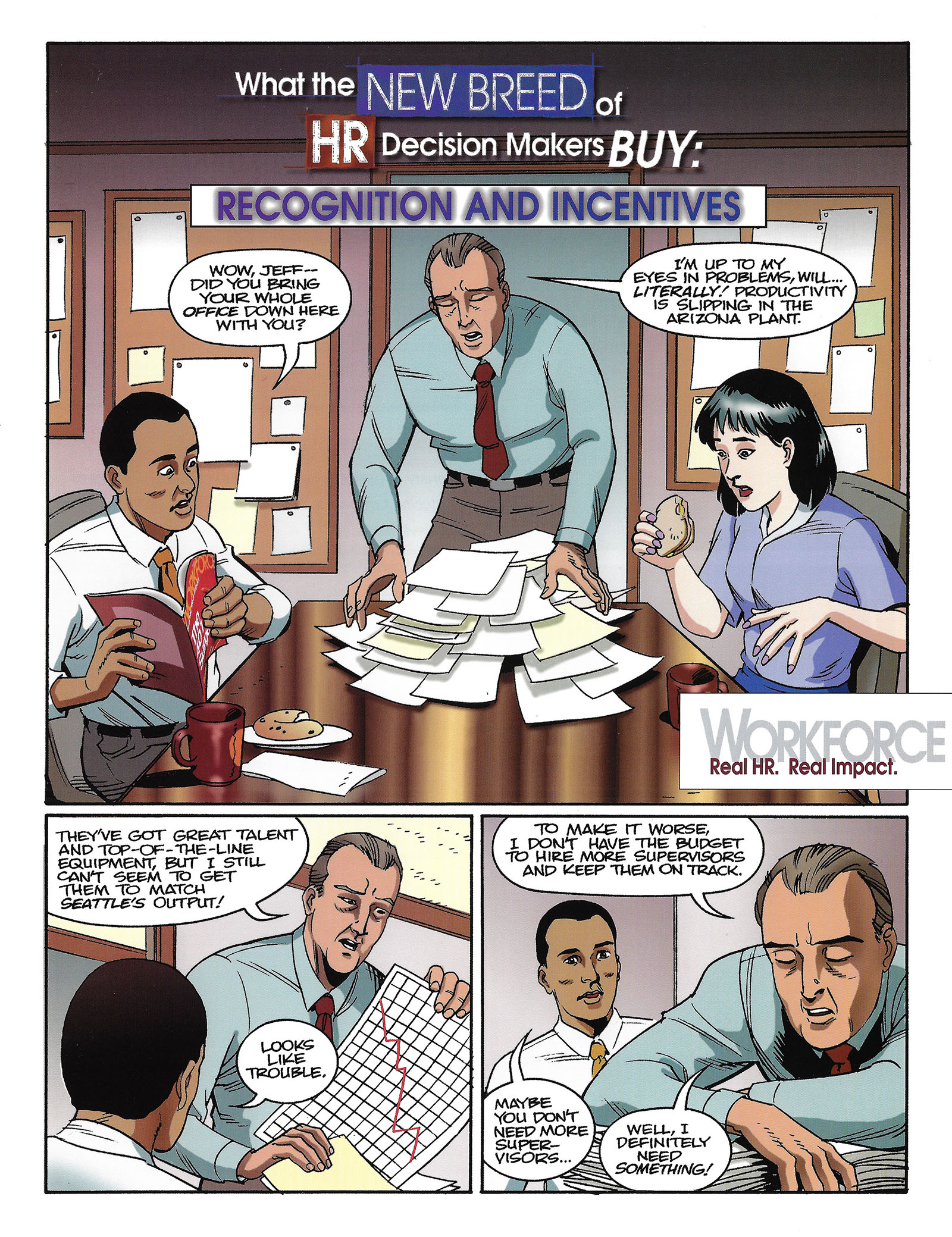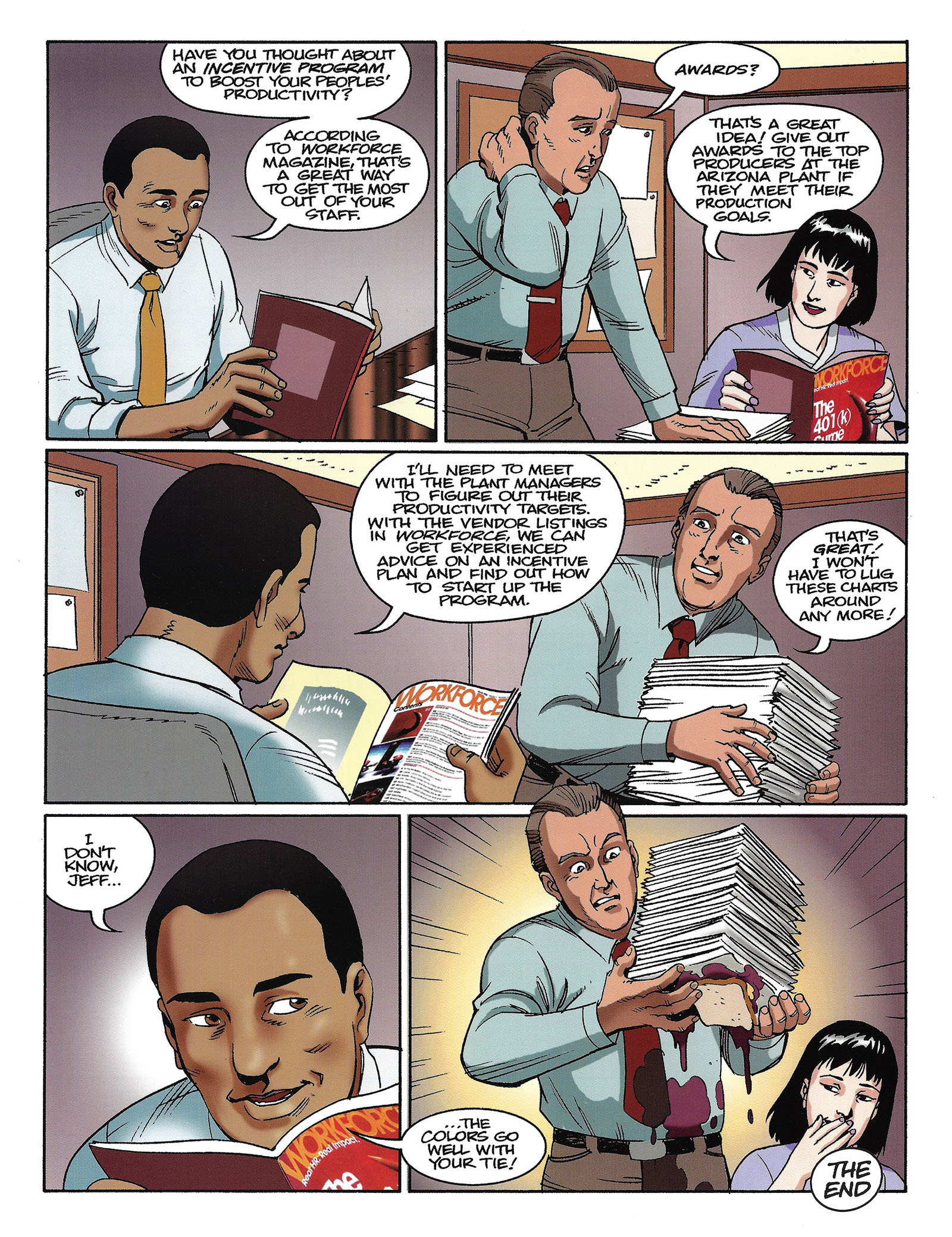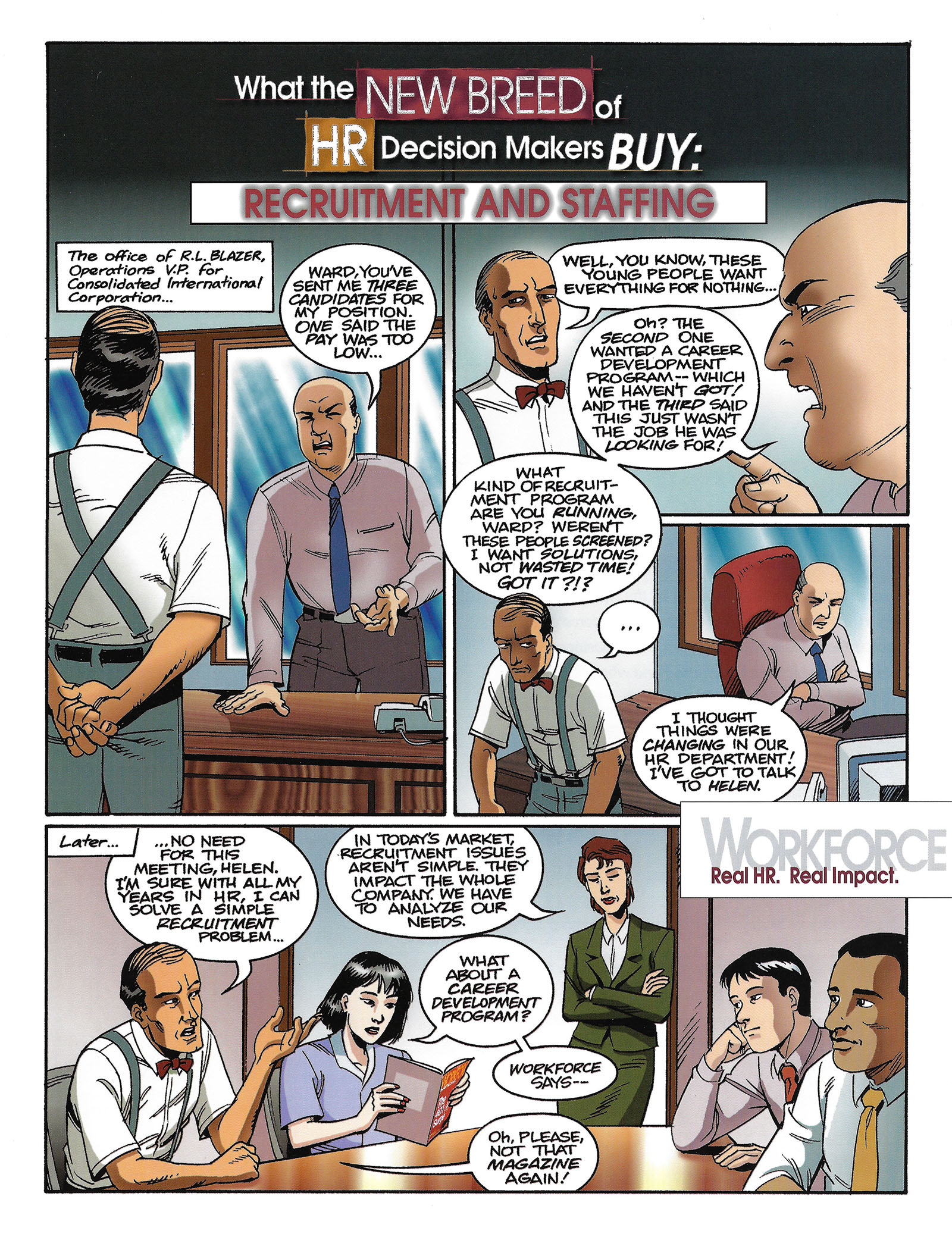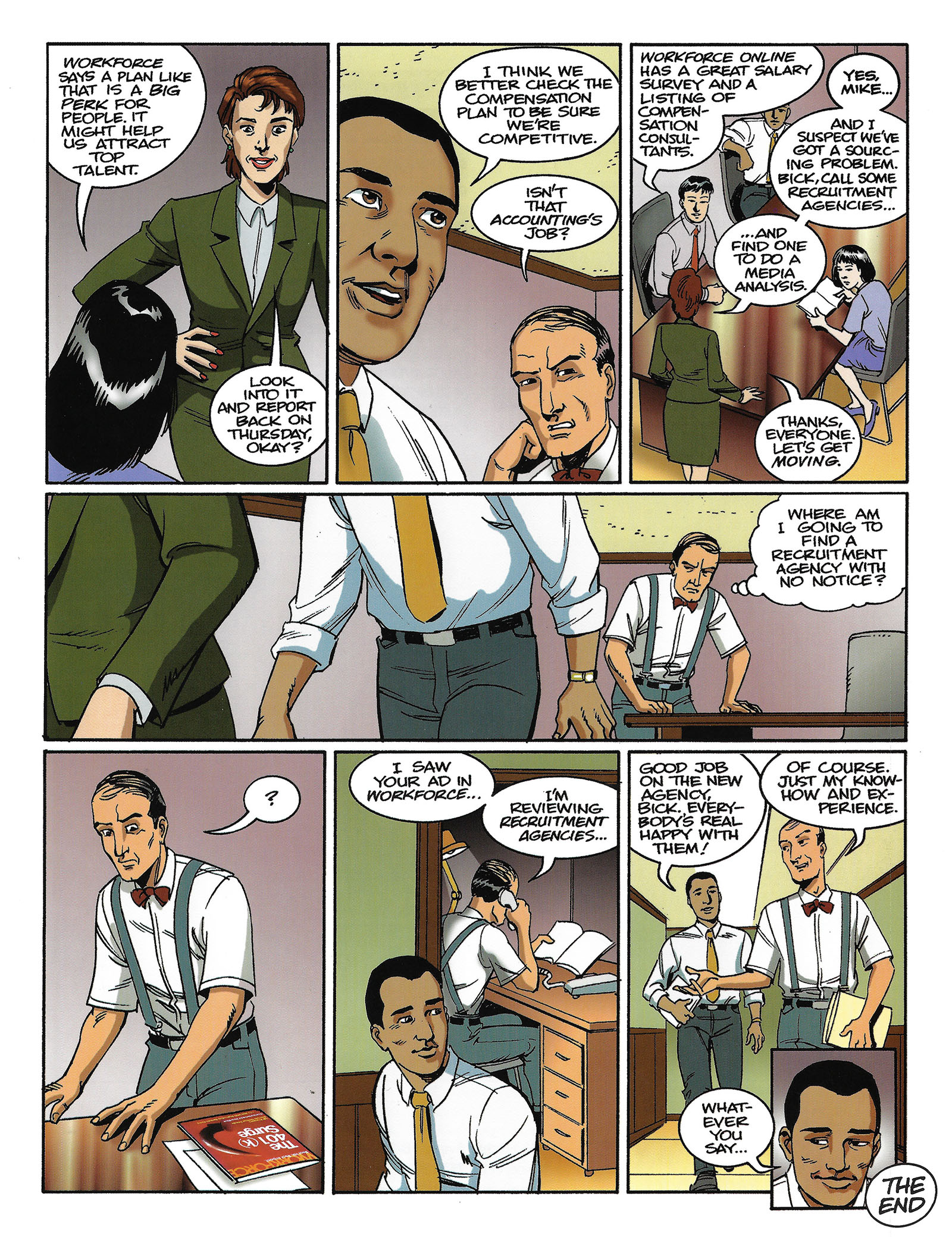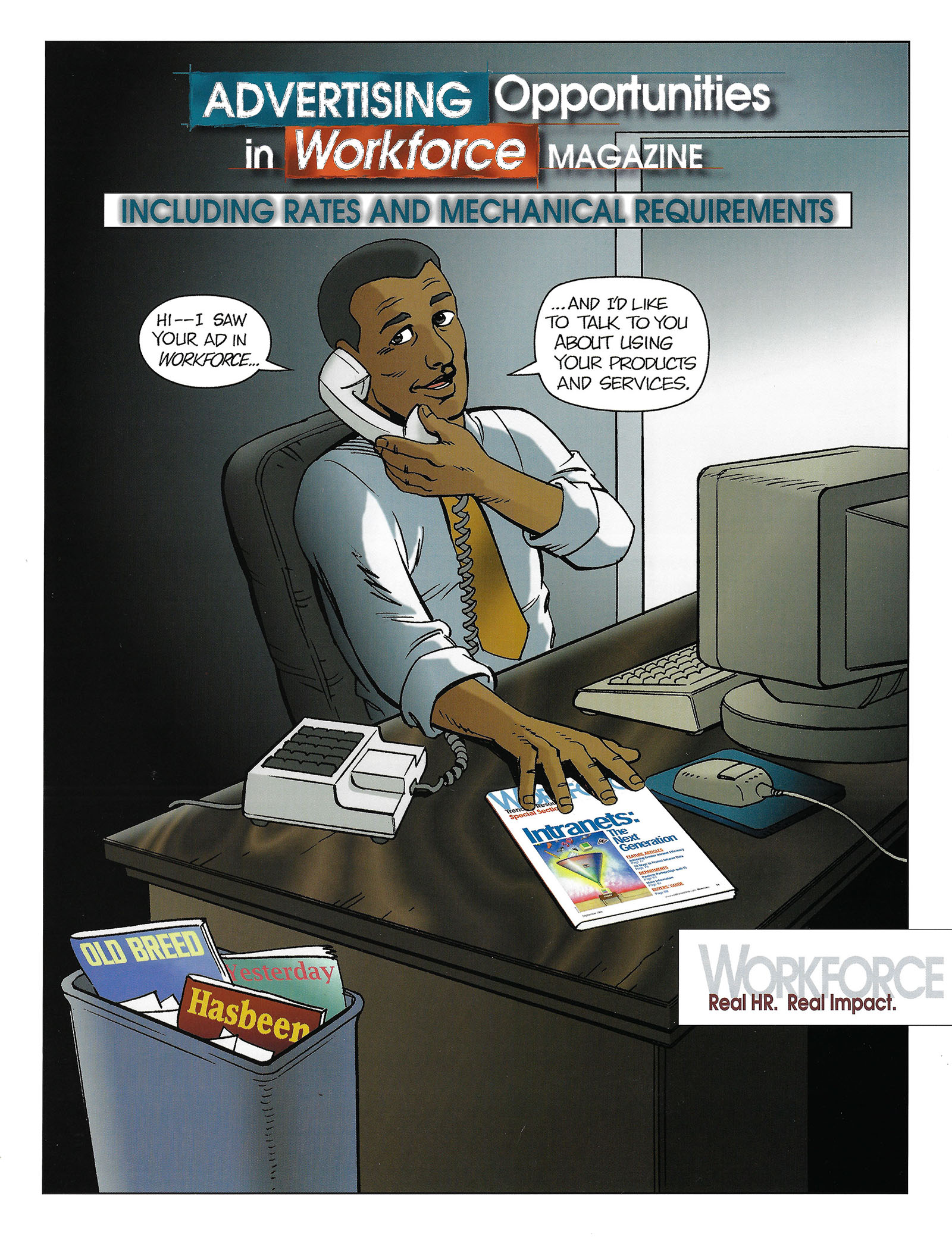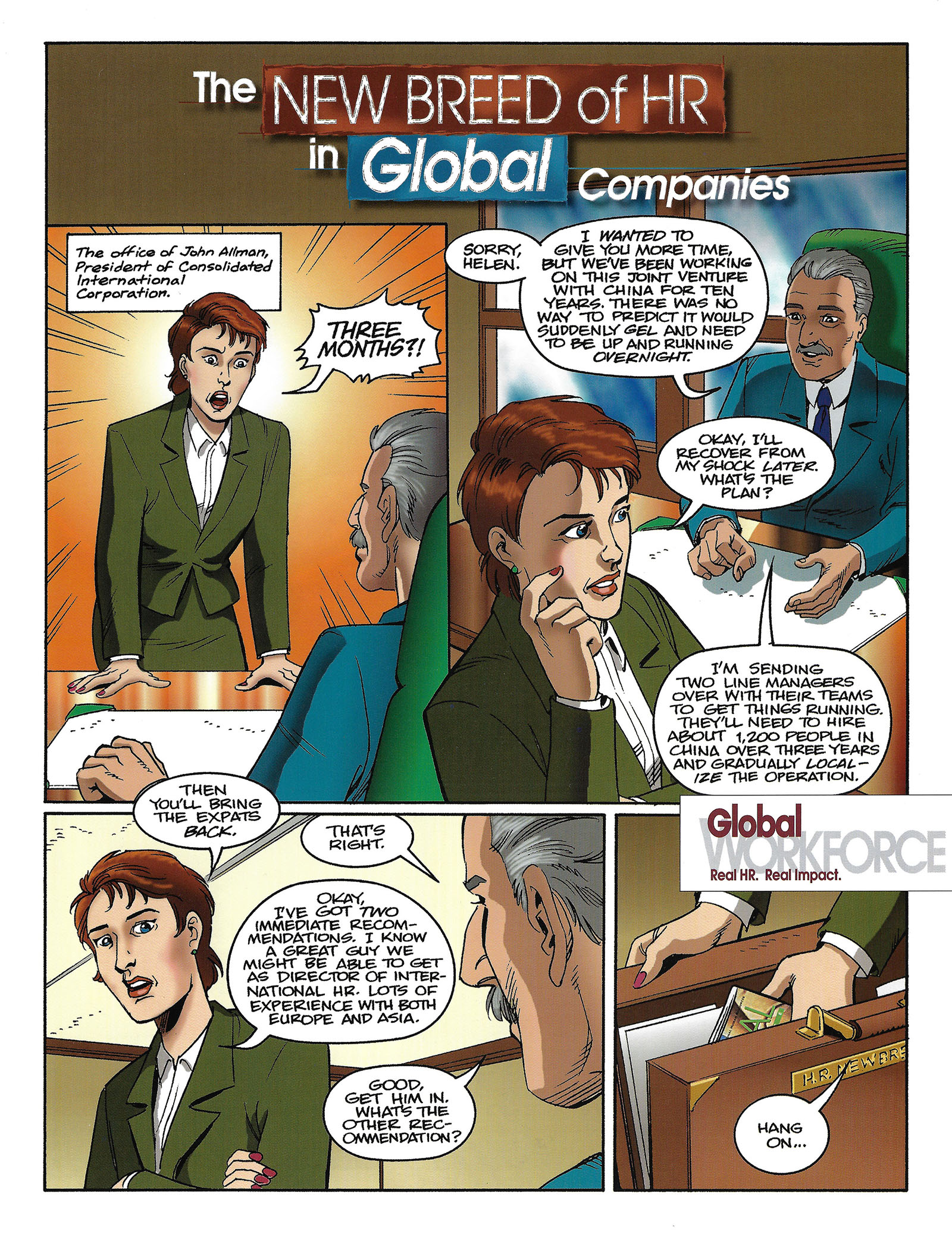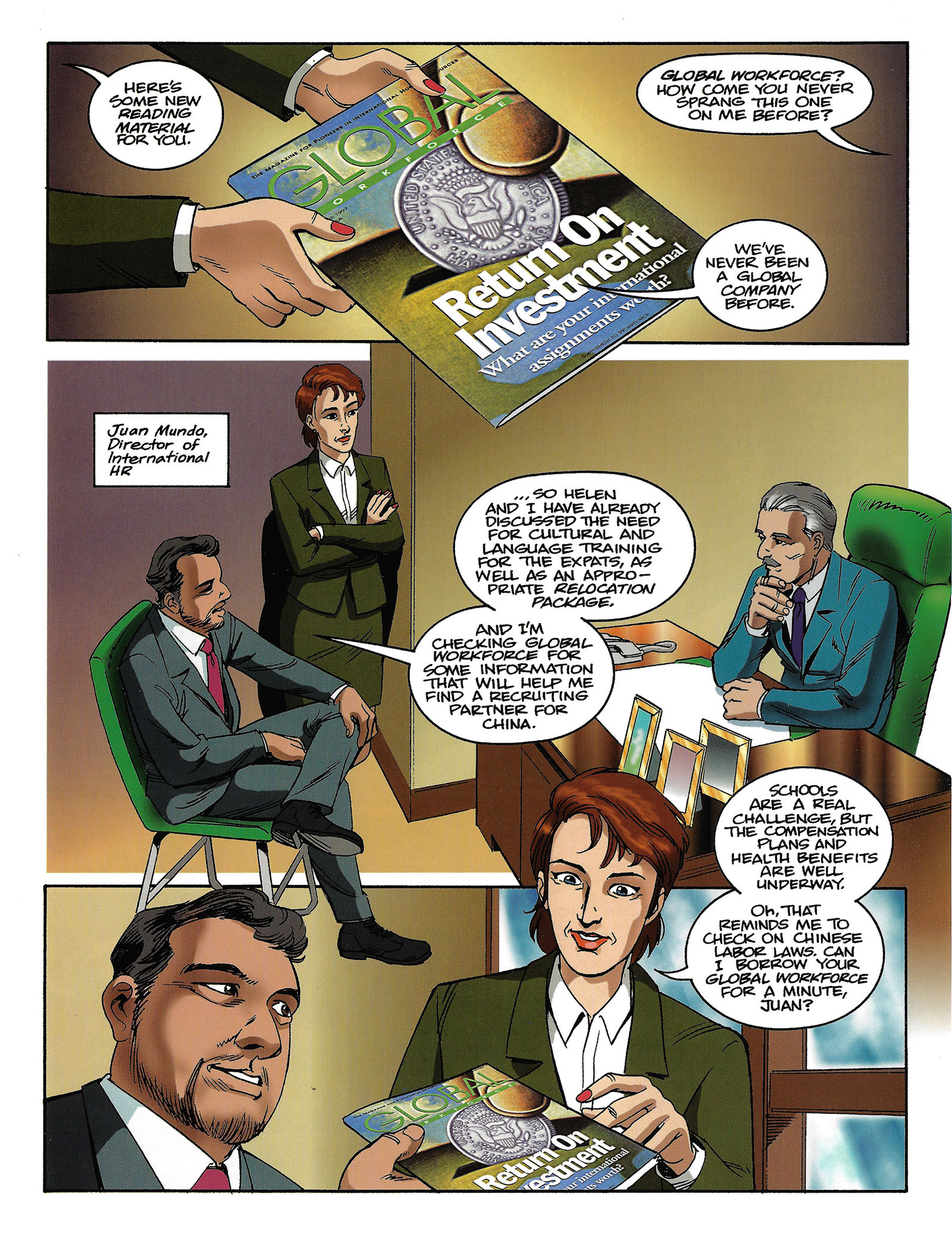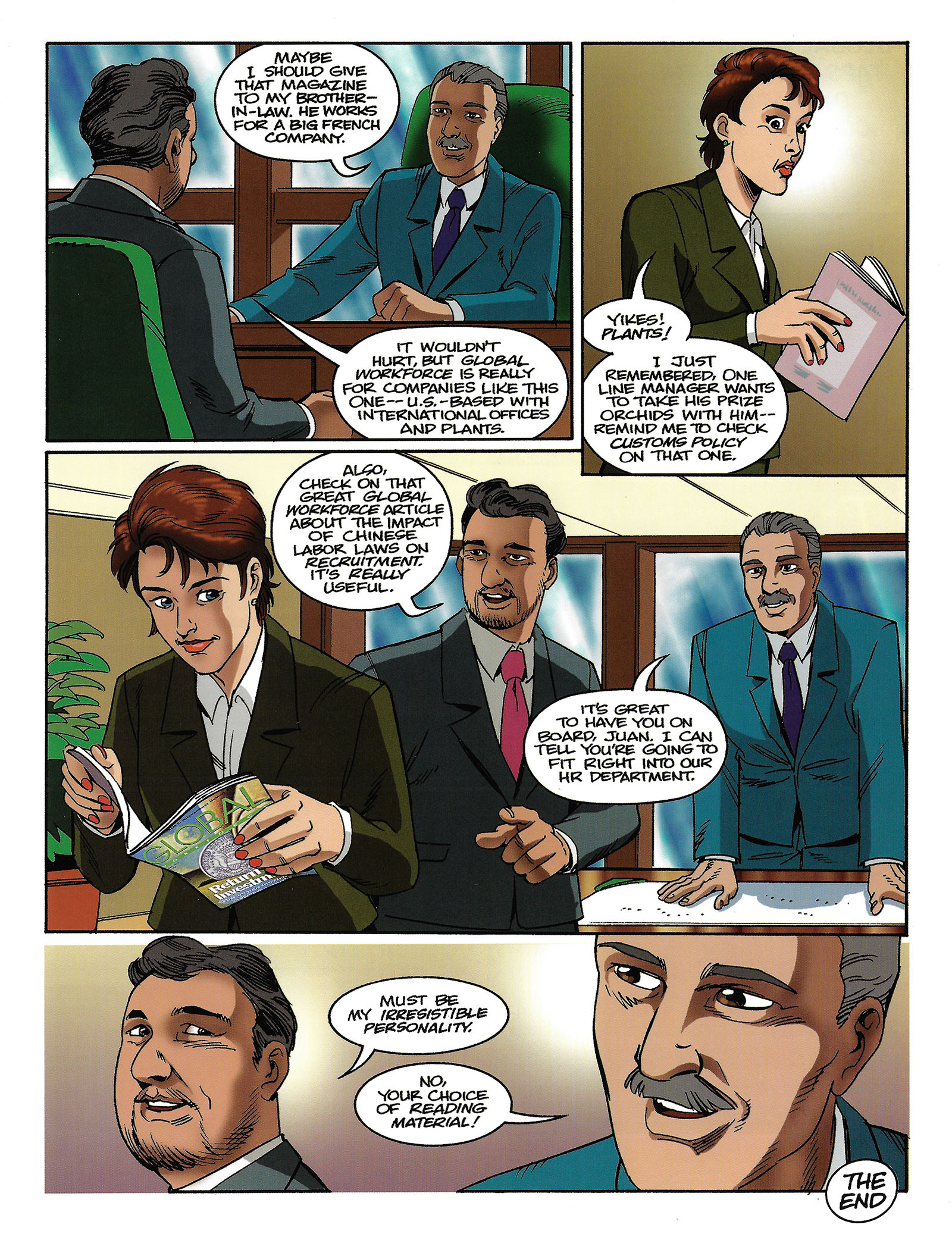Secret comics: Workforce media kit, 1998
This was another one of those unusual projects that was never meant to be seen by the greater public. Its target audience was very narrow and very corporate. It was another example of how a career drawing comics can take you to some unexpected places.
If you’re like me (and I know I am), the term “H.R.” alternates between punchline fodder and negativity. Few encounters with H.R. personnel work out to our advantage. But when we stop to remind ourselves that H.R. stands for Human Resources, and they’re the ones who keep the lights on and the bathrooms stocked and the health care flowing, we tend to lighten up on them.
It may surprise you to learn that the H.R. community as a whole is large and complex enough to warrant its own trade magazine. This is what I learned when a fella I worked with in 1997 (and whose name still escapes me, so I call him “Pete”) rang me up again in 1998 to ask if I was available for another collaboration. Our first one brought comics to the corporate world in the form of an annual report for a company called DataWorks. This time it would be for a magazine.
The name of that magazine was Workforce, and it was a trade journal for people in the H.R. world. Again, I had no clue that such a thing was necessary. And indeed still is. These days it appears to have evolved into an online service, but it’s still serving the same purpose.
Back in 1998 when it was still being printed on paper, it also needed to be promoted on paper. Like the DataWorks project, Pete thought comics could be engaged as a promotional vehicle, and he wanted me to help him produce a media kit for the magazine. The purpose of the kit would be to demonstrate how useful the magazine could be to beleaguered H.R. personnel through real-life tales of struggle and success in an office environment.
He came up with a cast of characters and scripted a variety of stories for them. The main piece was a 12-pager in which a troubled office got some uplift by empowering their H.R. department to do more for the company. This was bolstered by nine short stories that got into more specific activities. I ended up drawing and lettering 33 pages of content, which were then colored by a friend named John Ott, with whom I’d made a bunch of comics when we had our own mini-studio. (More about that in future articles.)
The finished package was a bundle of individual pamphlets with my comics as a “lure” to get prospective customers to read the dryer facts and figures tucked inside. I had no contact with Workforce magazine myself. That was all Pete’s doing. It was his project. He sold them on the idea and hired me as a subcontractor. When my work was done, I turned it over to him and went back to my now-flourishing career making TV cartoons.
I still wonder what the prospective customers of Workforce magazine made of this unusual approach. I’m sure it was more fun to read than the usual corporate fare, and in terms of printing quality it’s the best my work has ever looked. But nowhere within the package was there an explanation of why comics were being used in this way, or even who wrote and drew them. My name appeared nowhere on it. But this hardly mattered to me. I don’t remember getting any more calls from Pete after this, but I was plenty busy making Godzilla cartoons for Sony Animation, so that didn’t matter either.
In fact, now that my TV career was off and running, this would be my last published comic book work for three years. Next up would be a very special graphic novel titled The Man Who Grew Young, written by Mr. Daniel Quinn. You bet I’ll get to that one in due time. For now, a trip into the wild world of H.R. awaits you. And if you’re not careful, you might learn something before it’s done!

